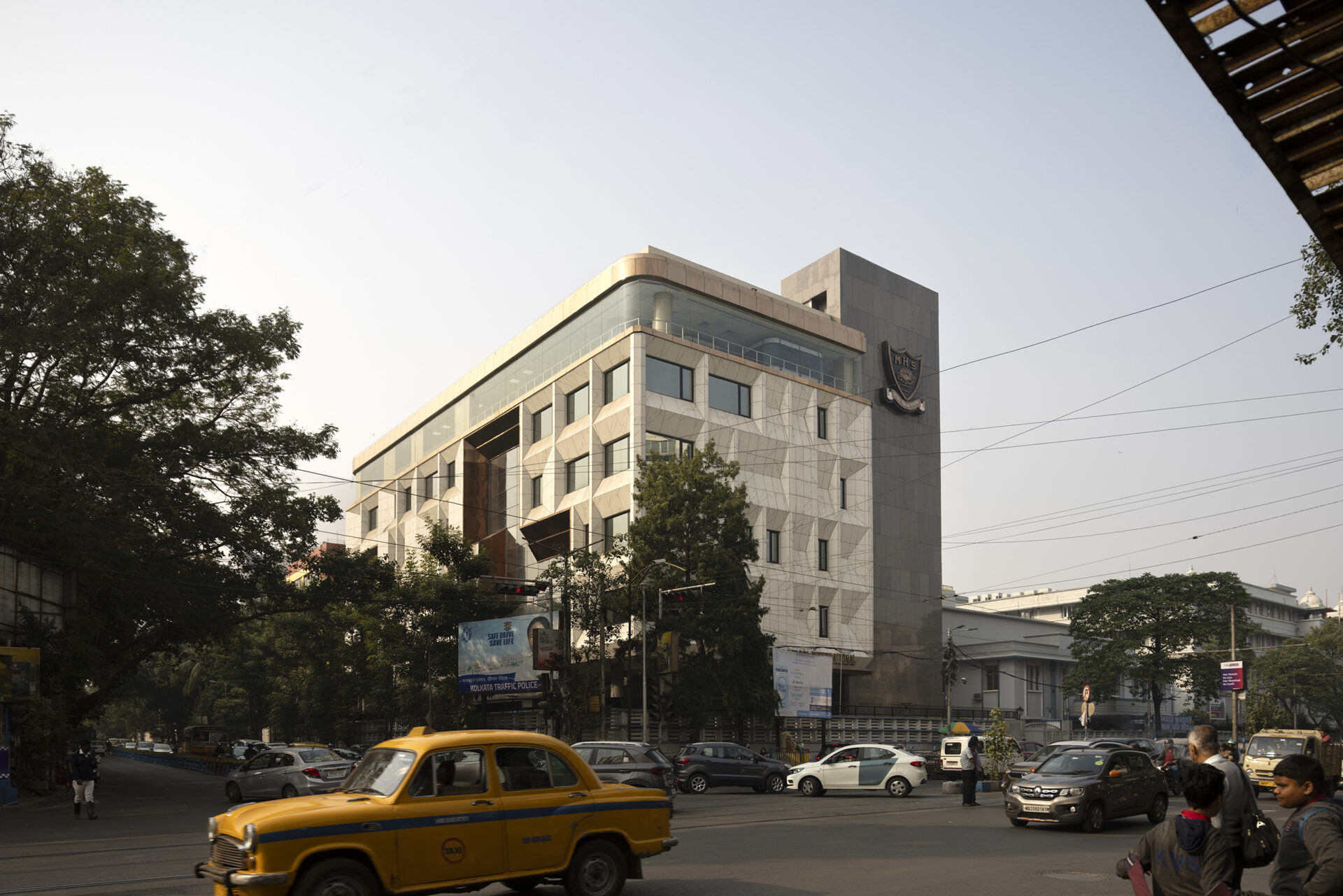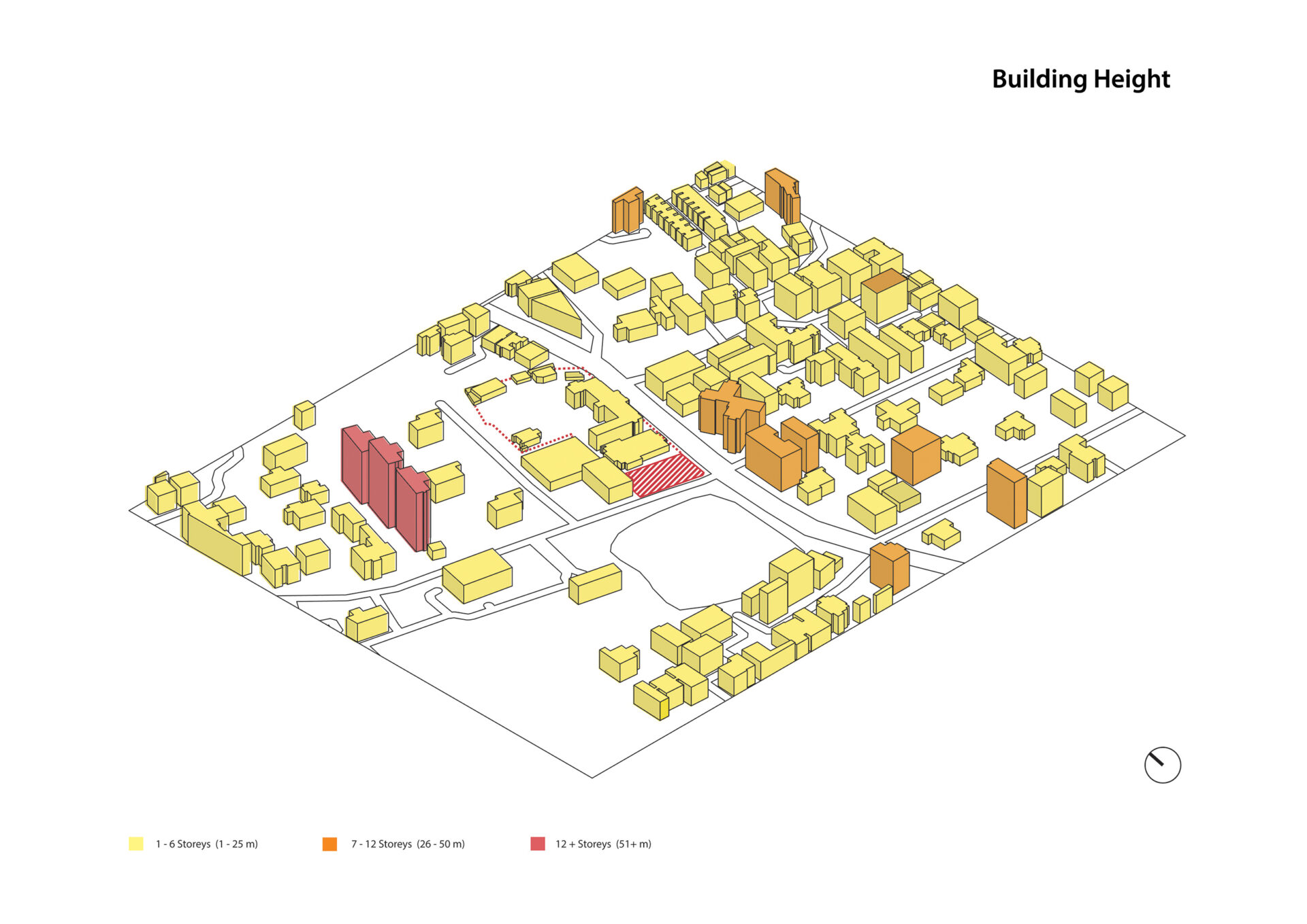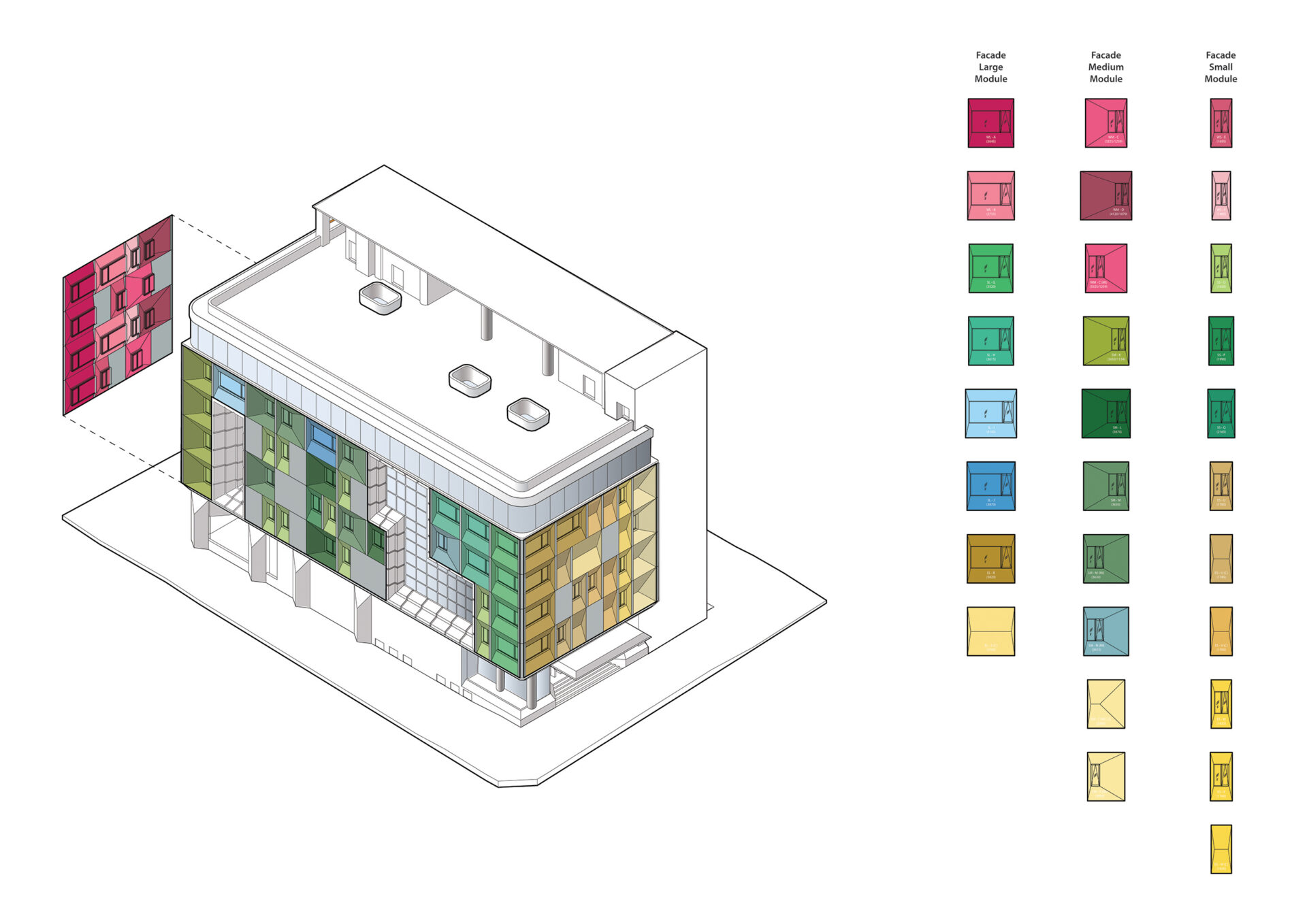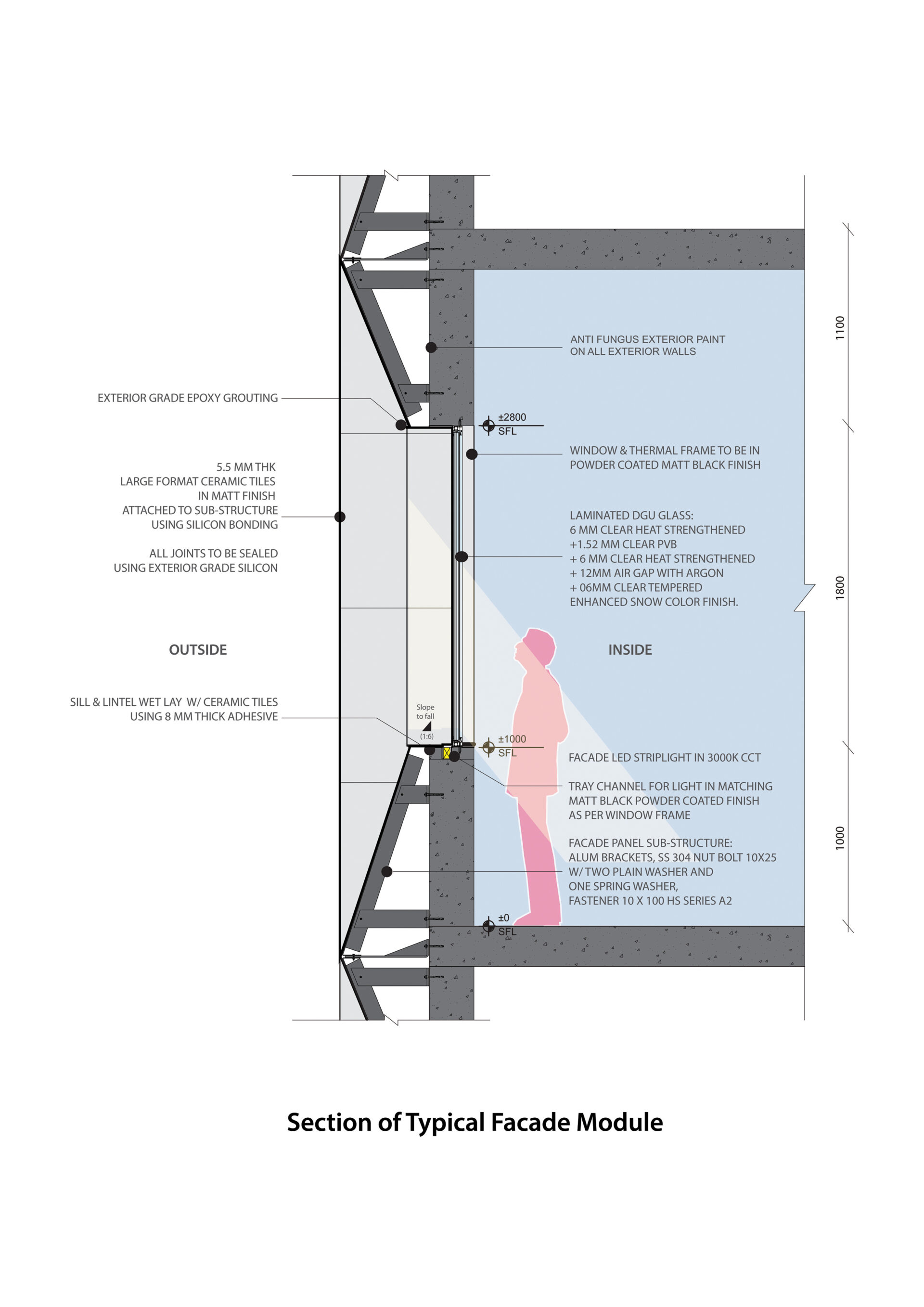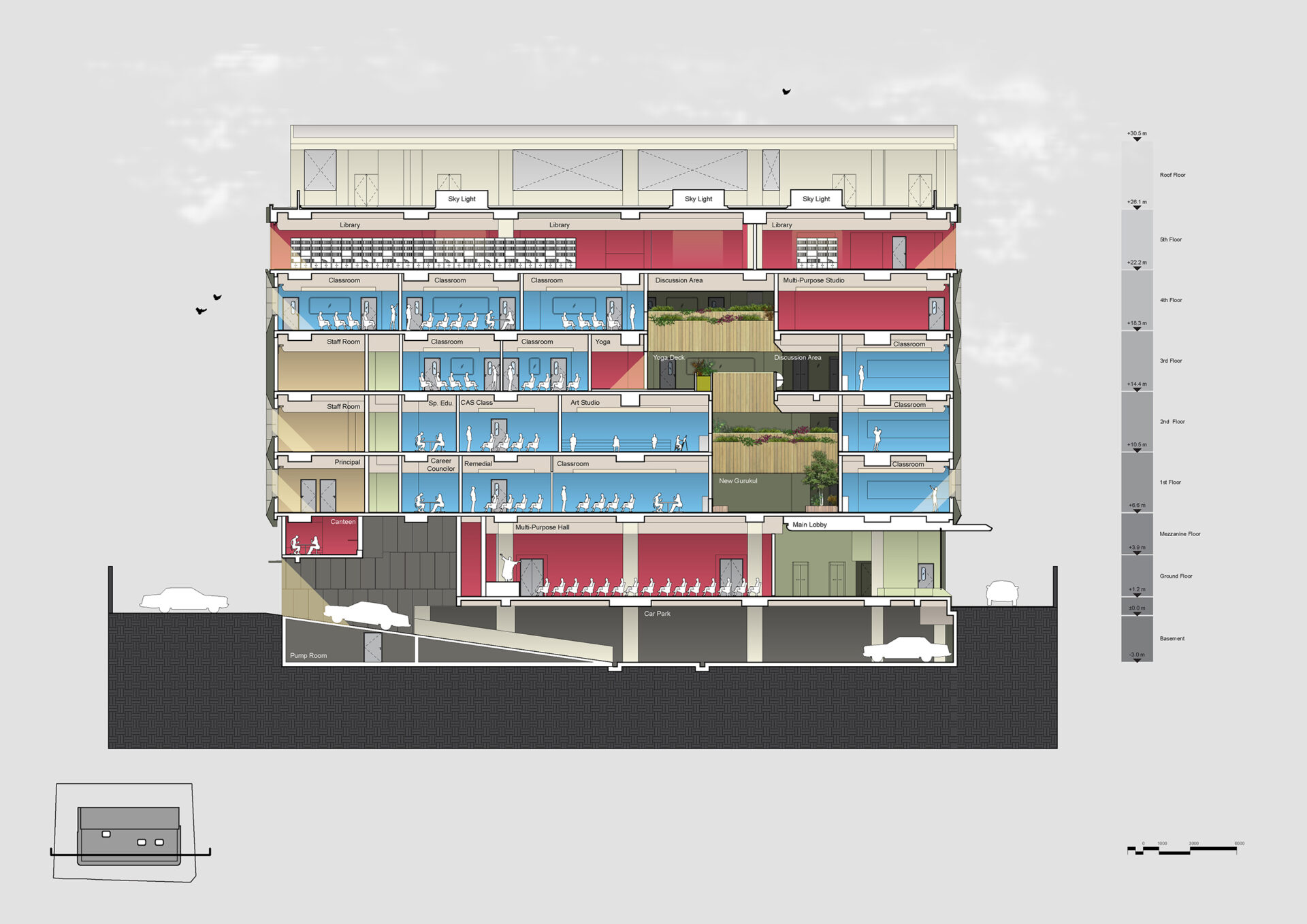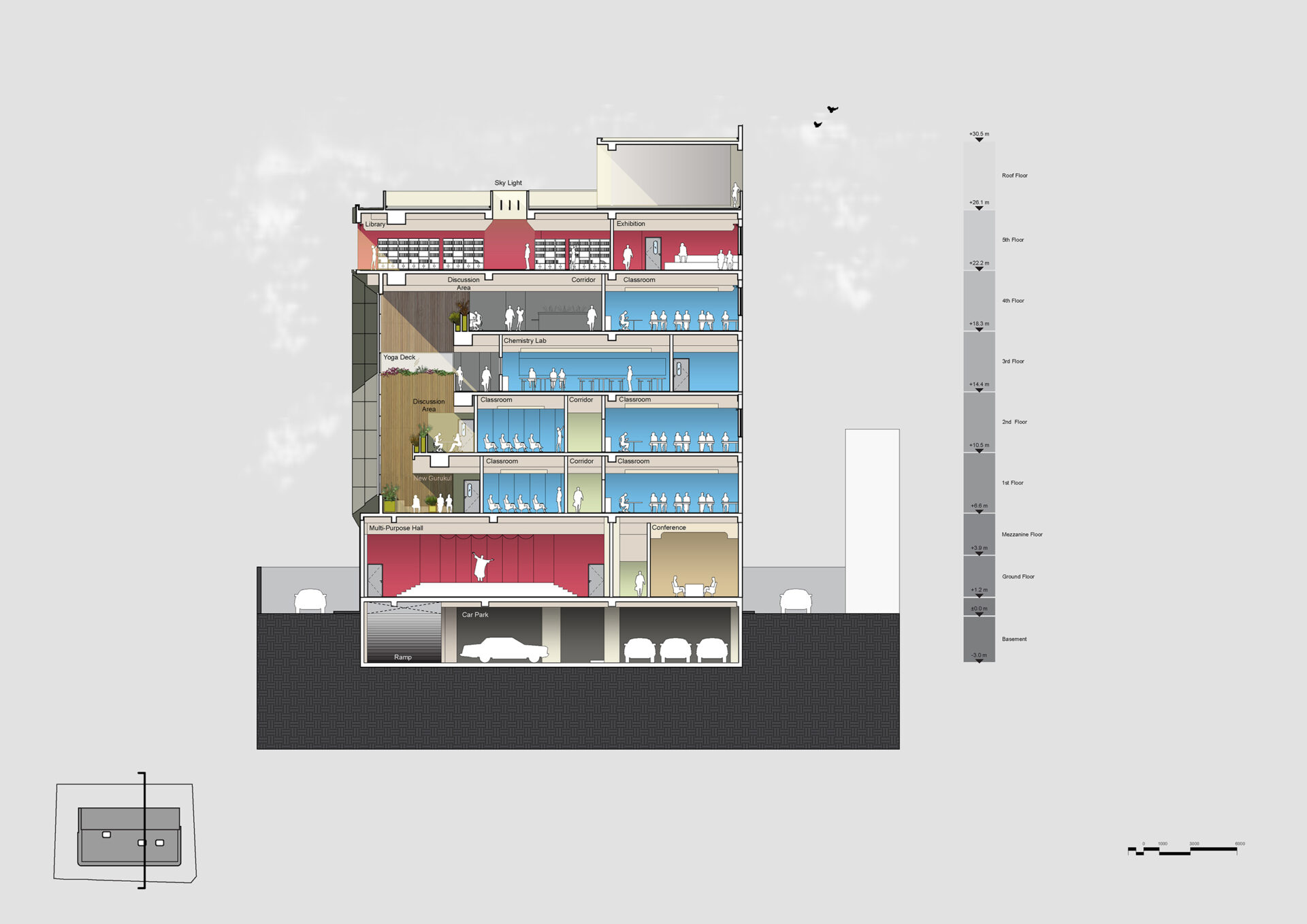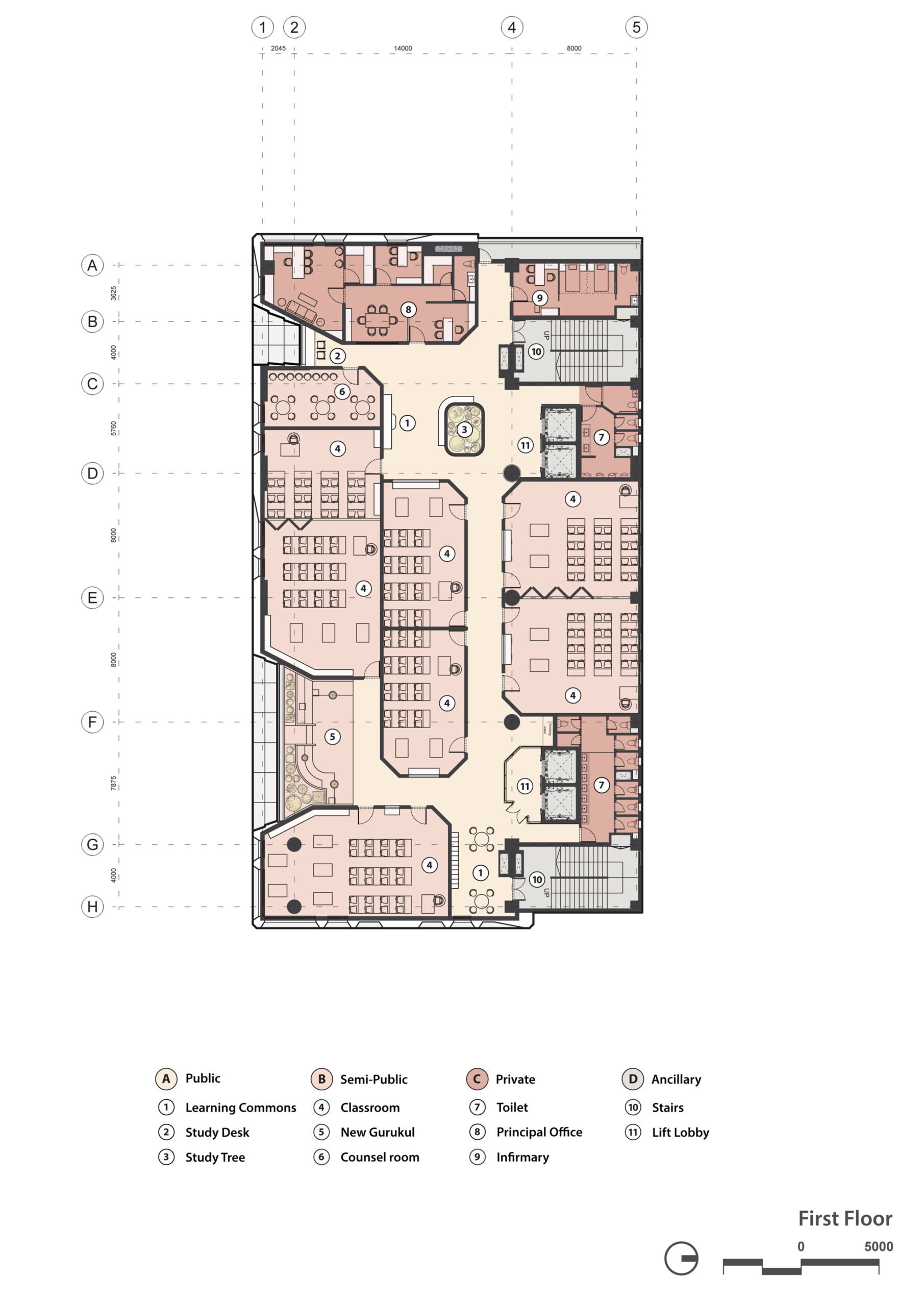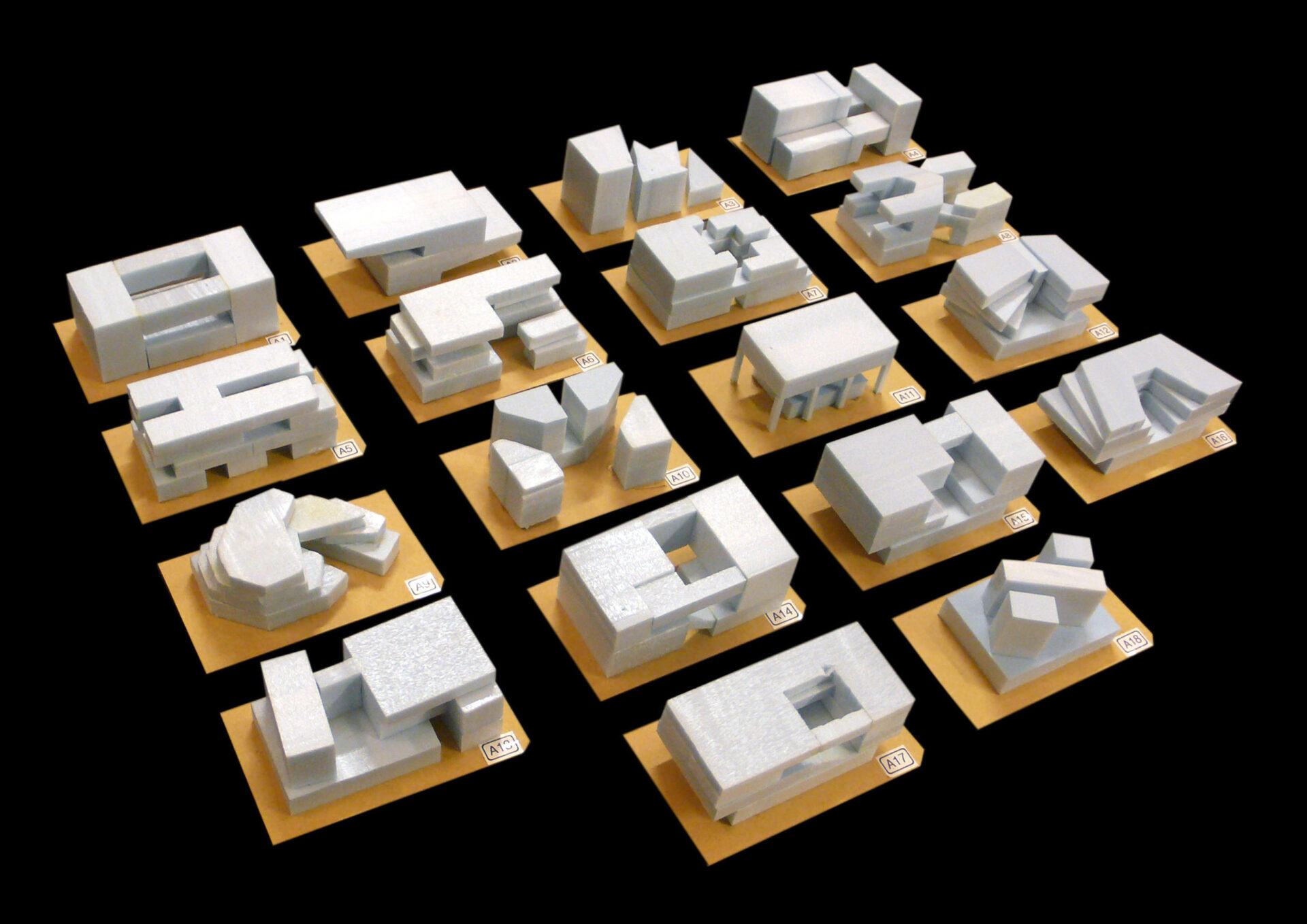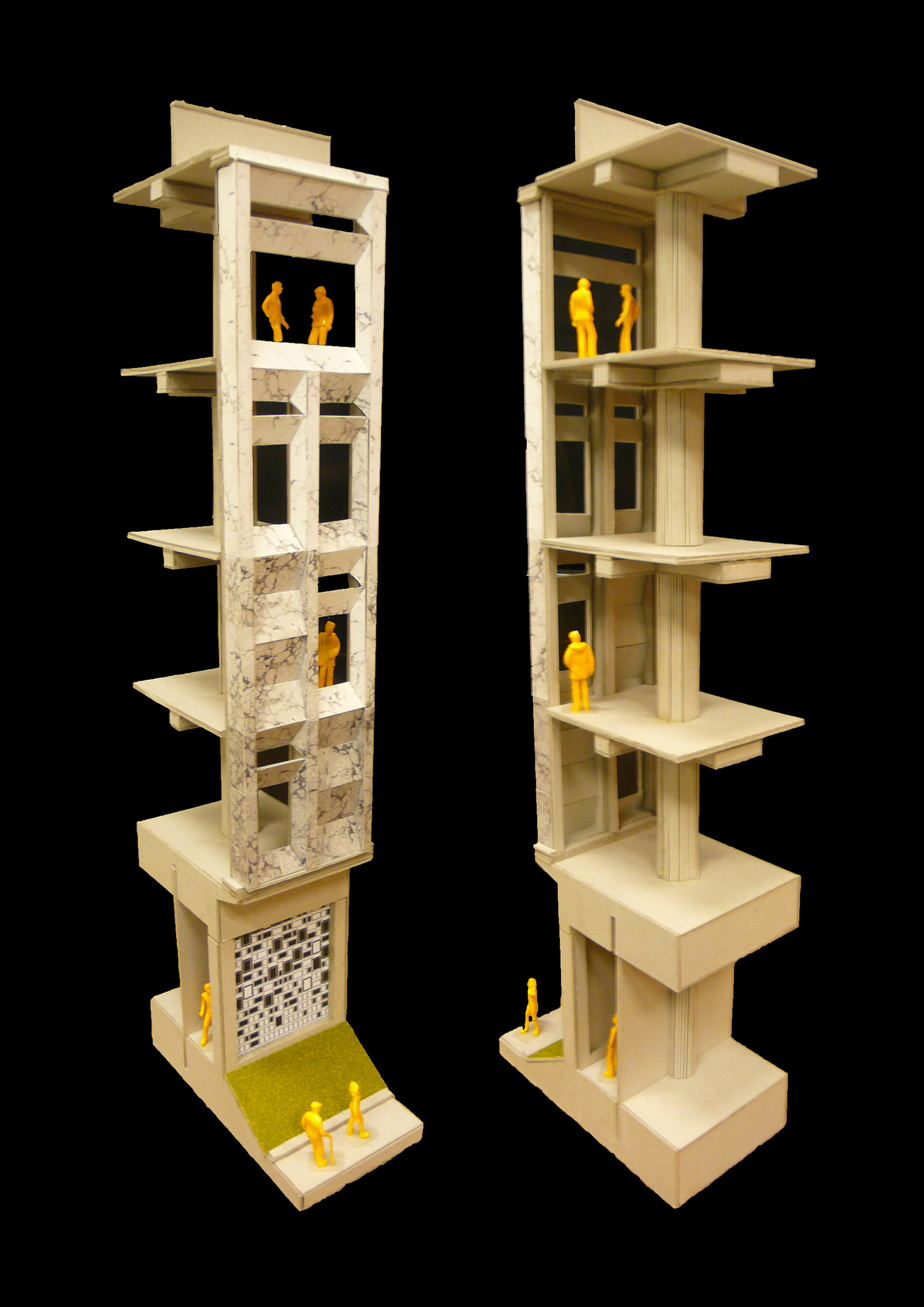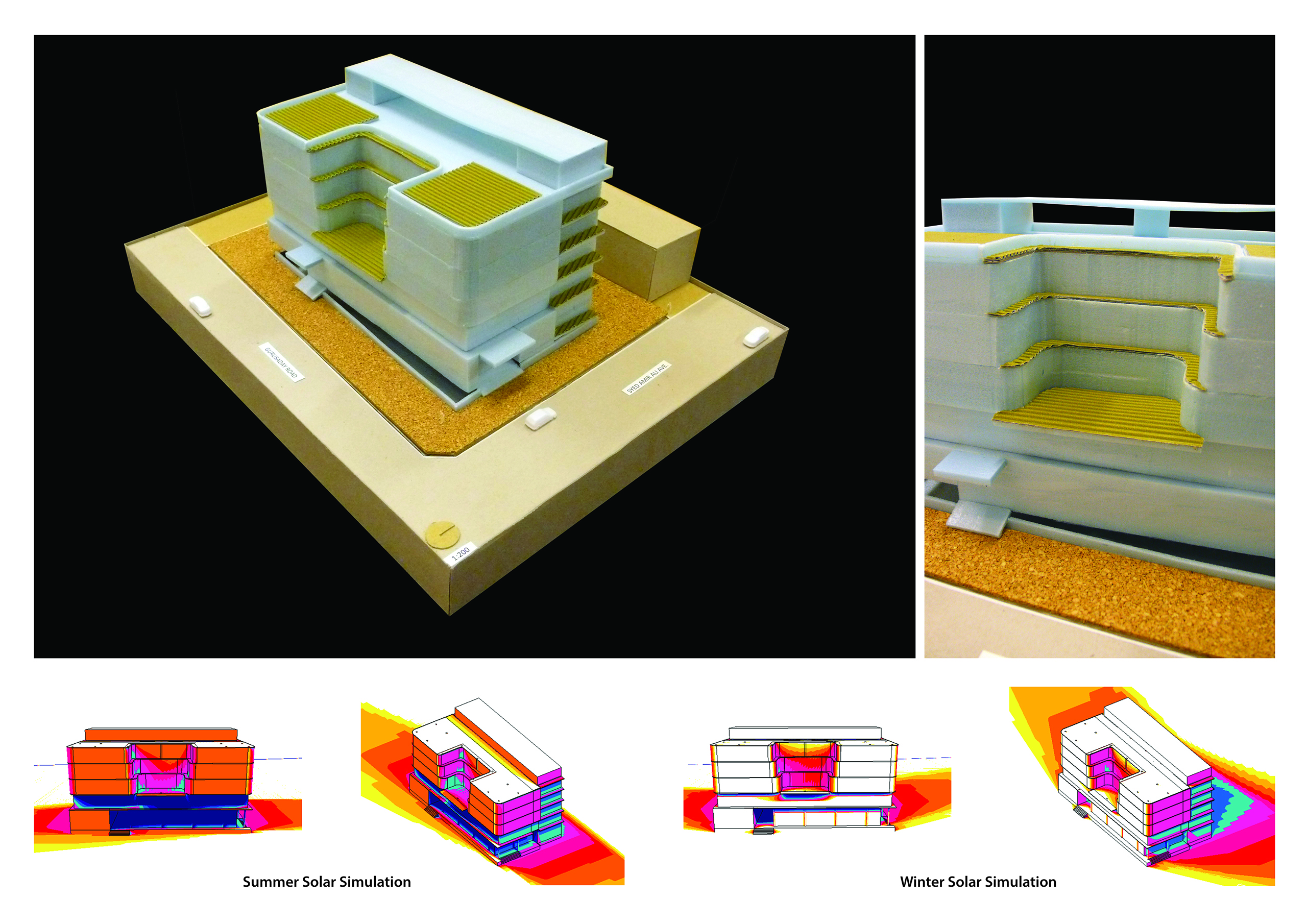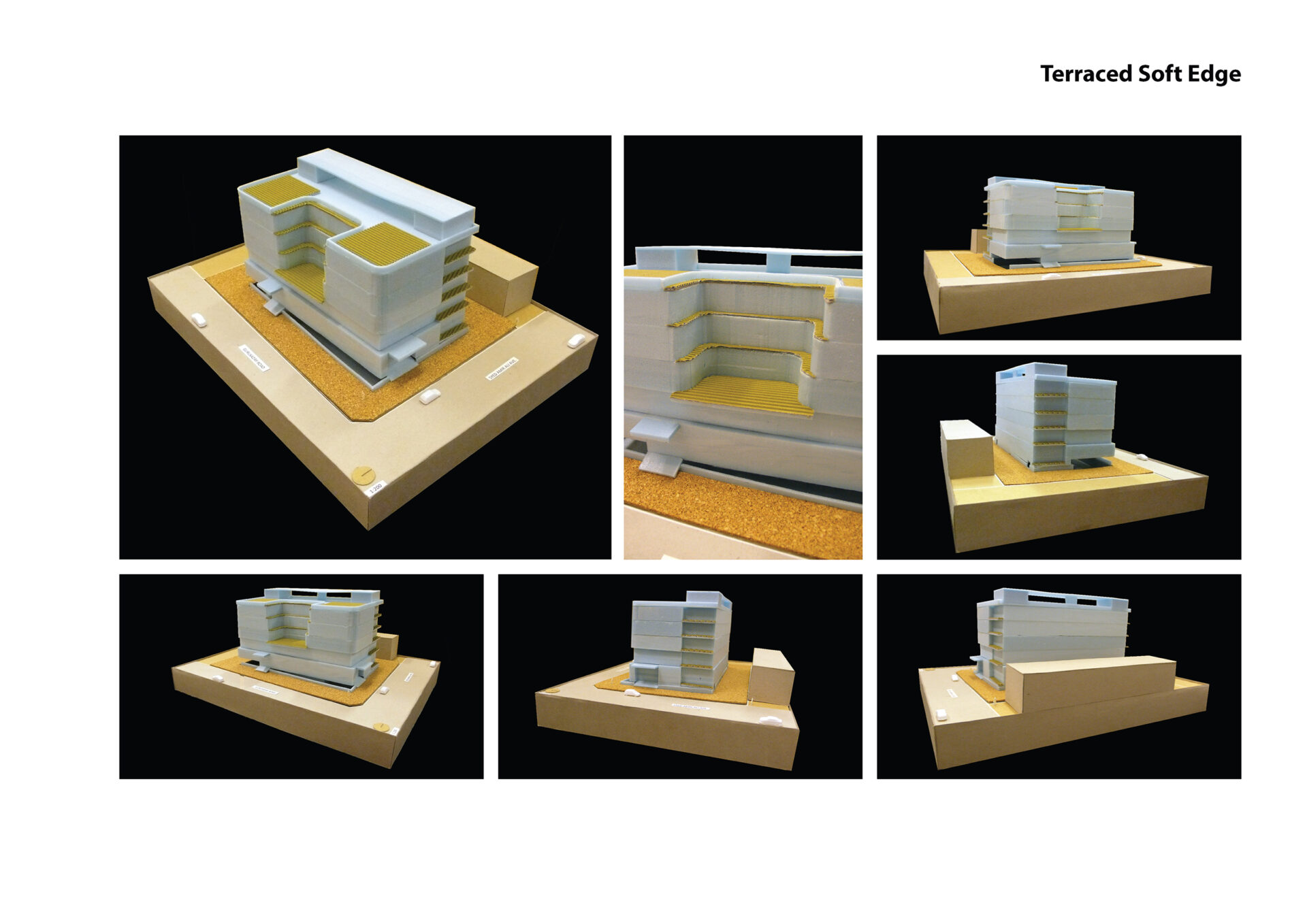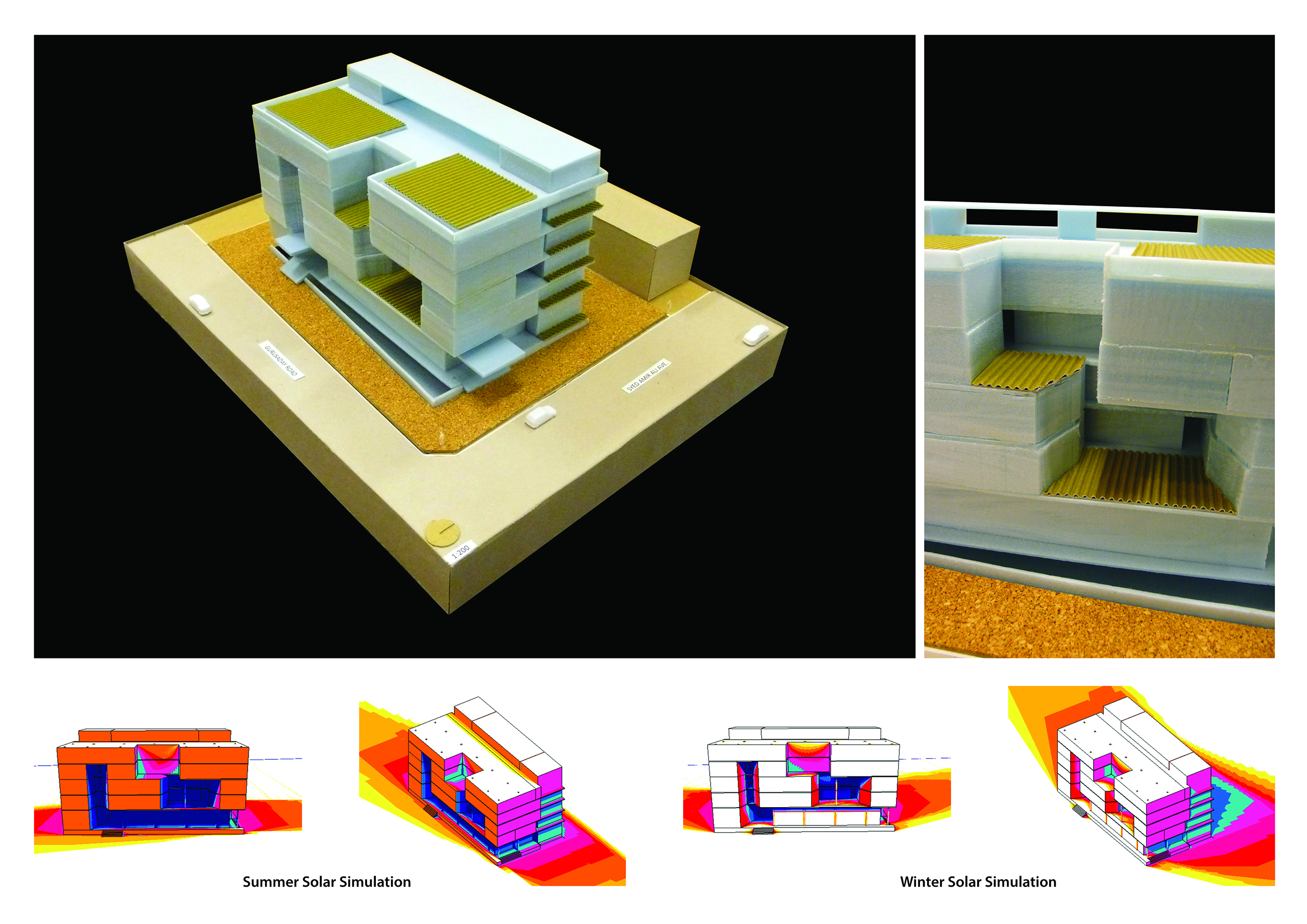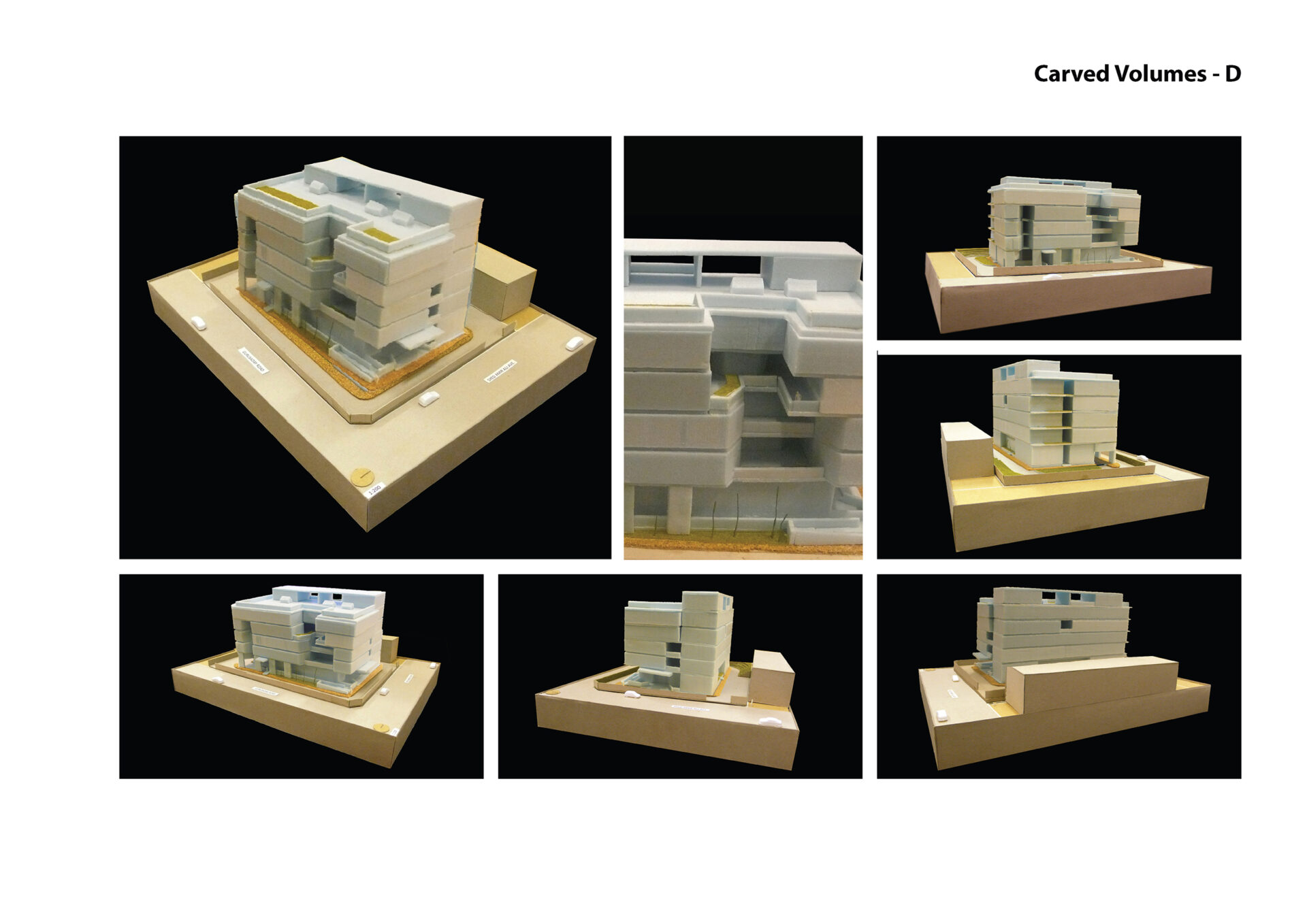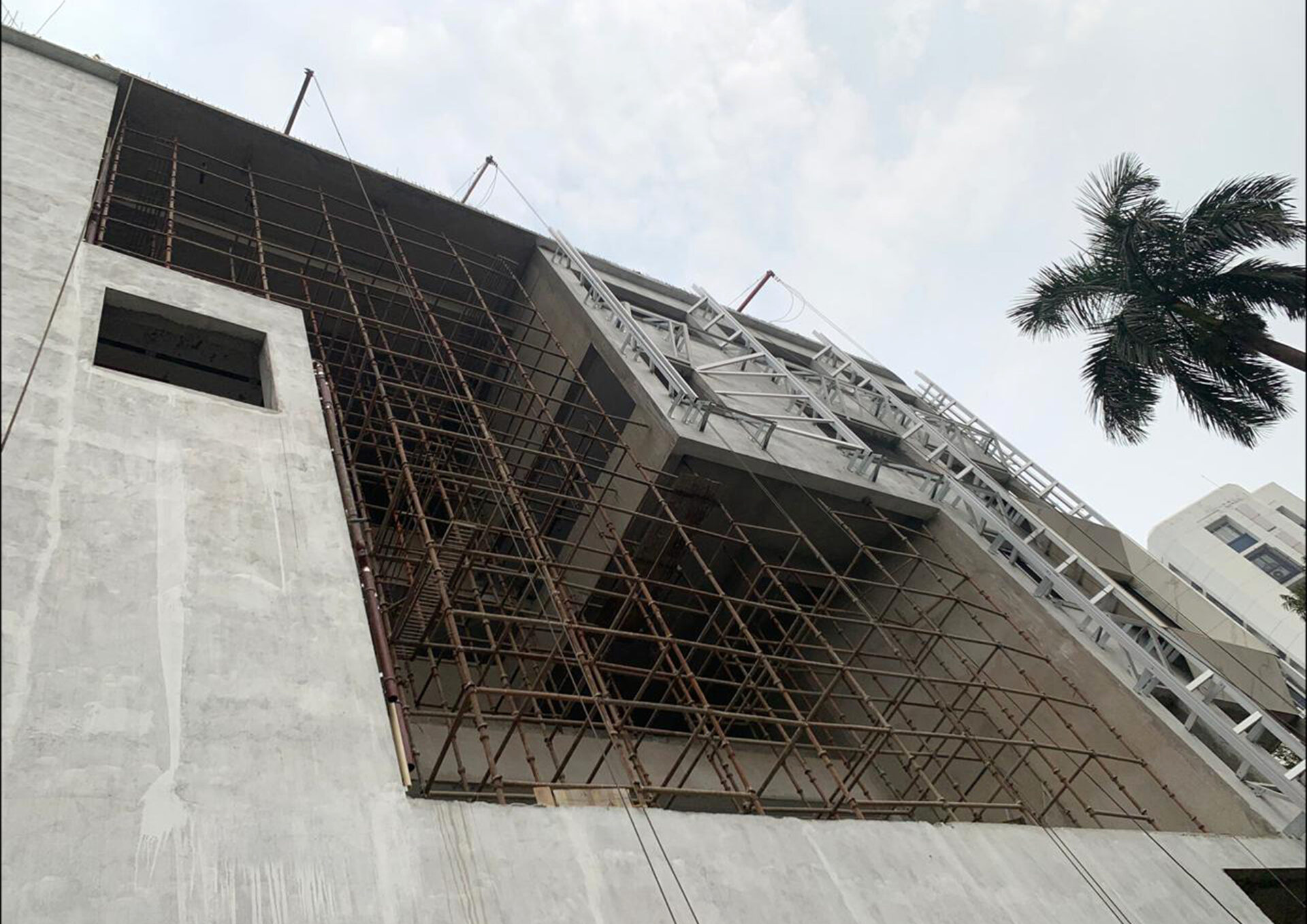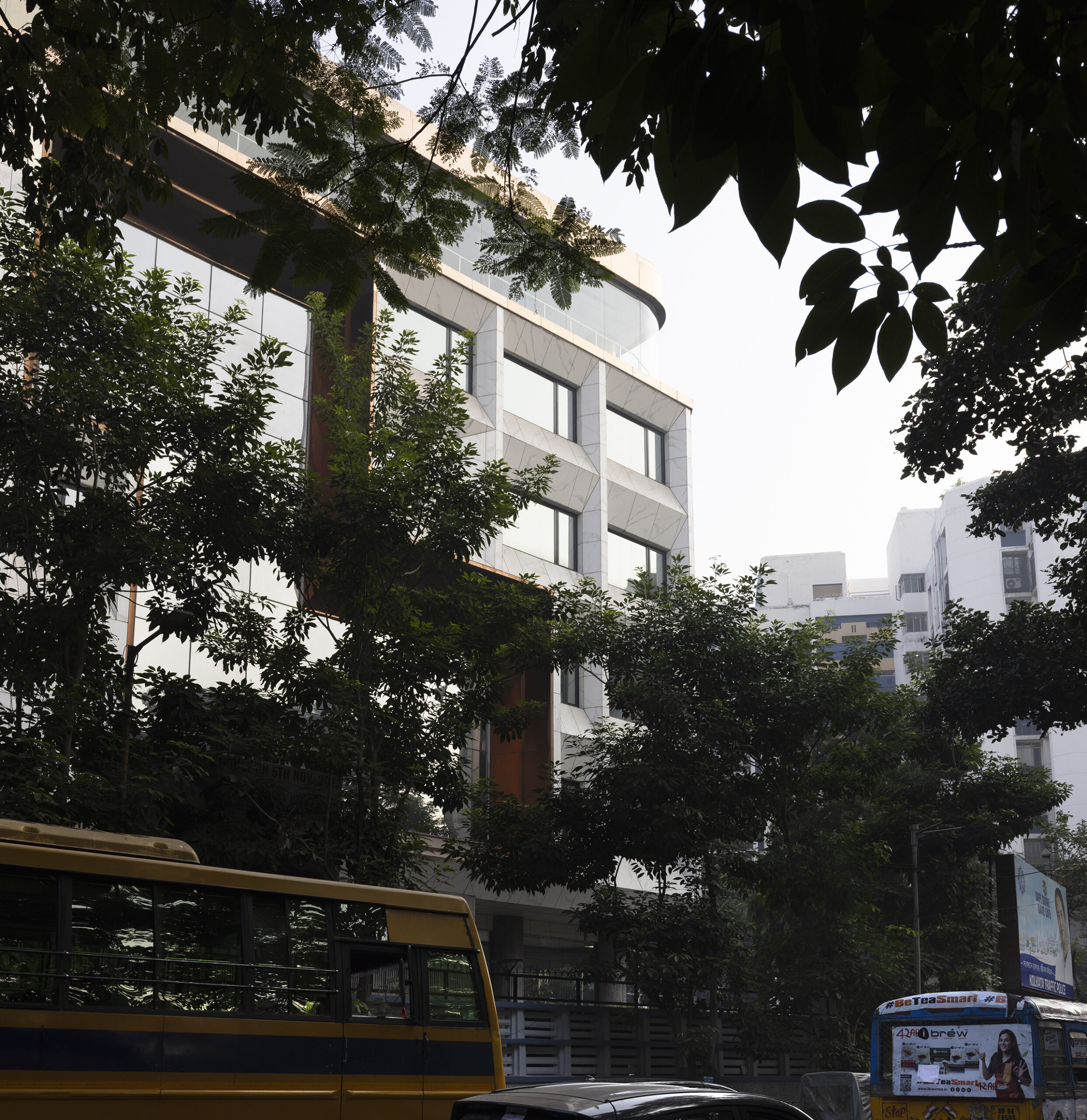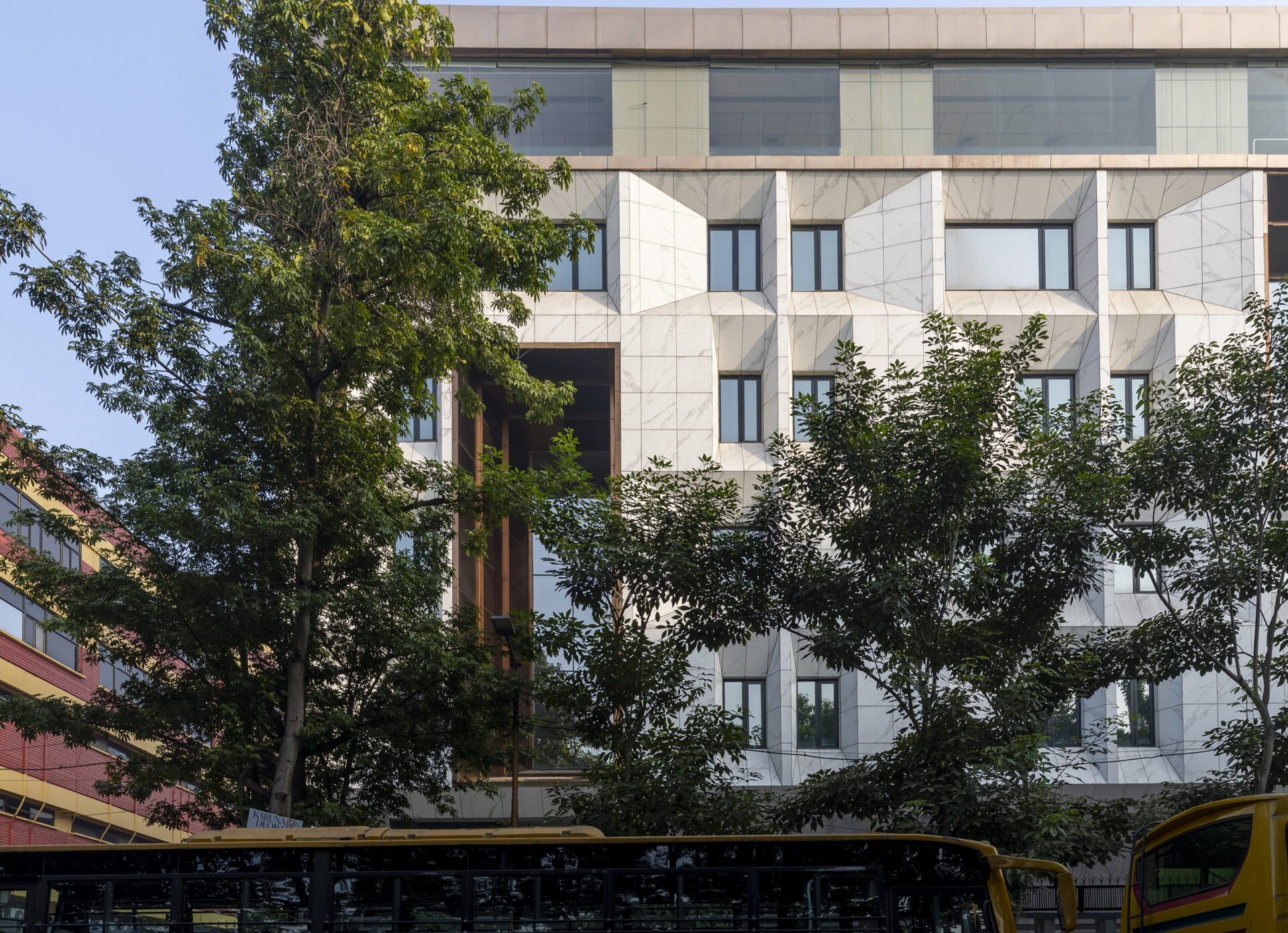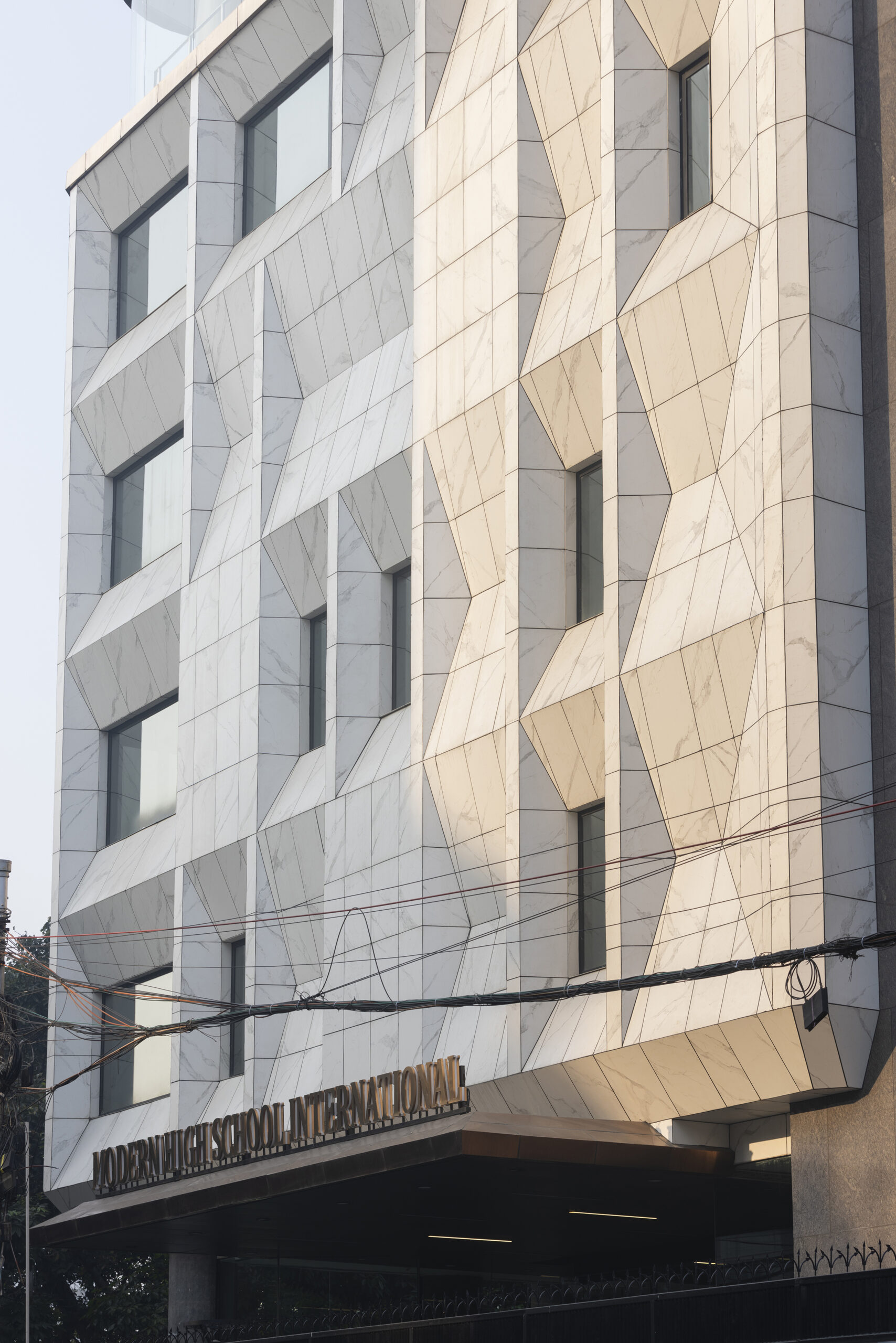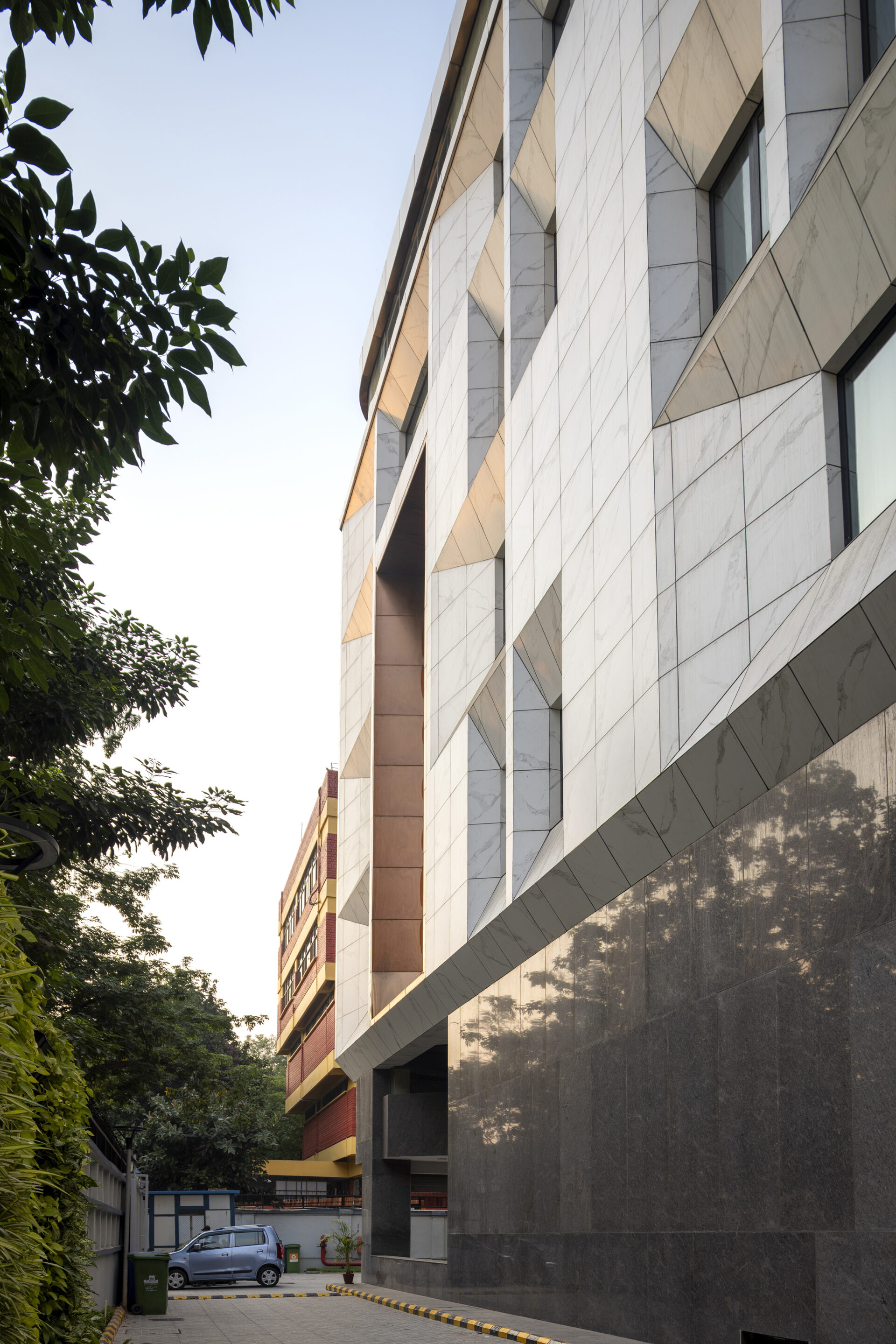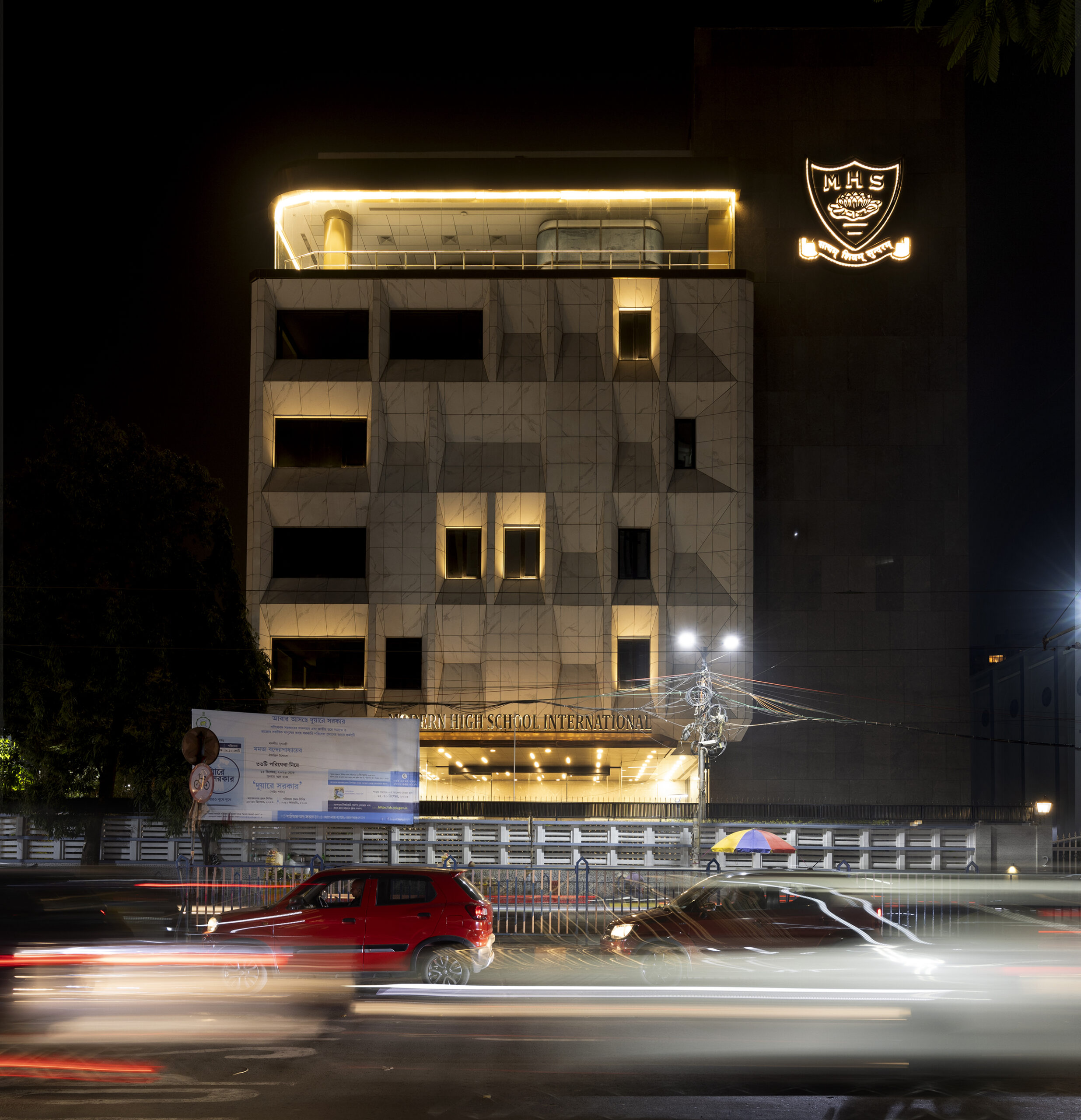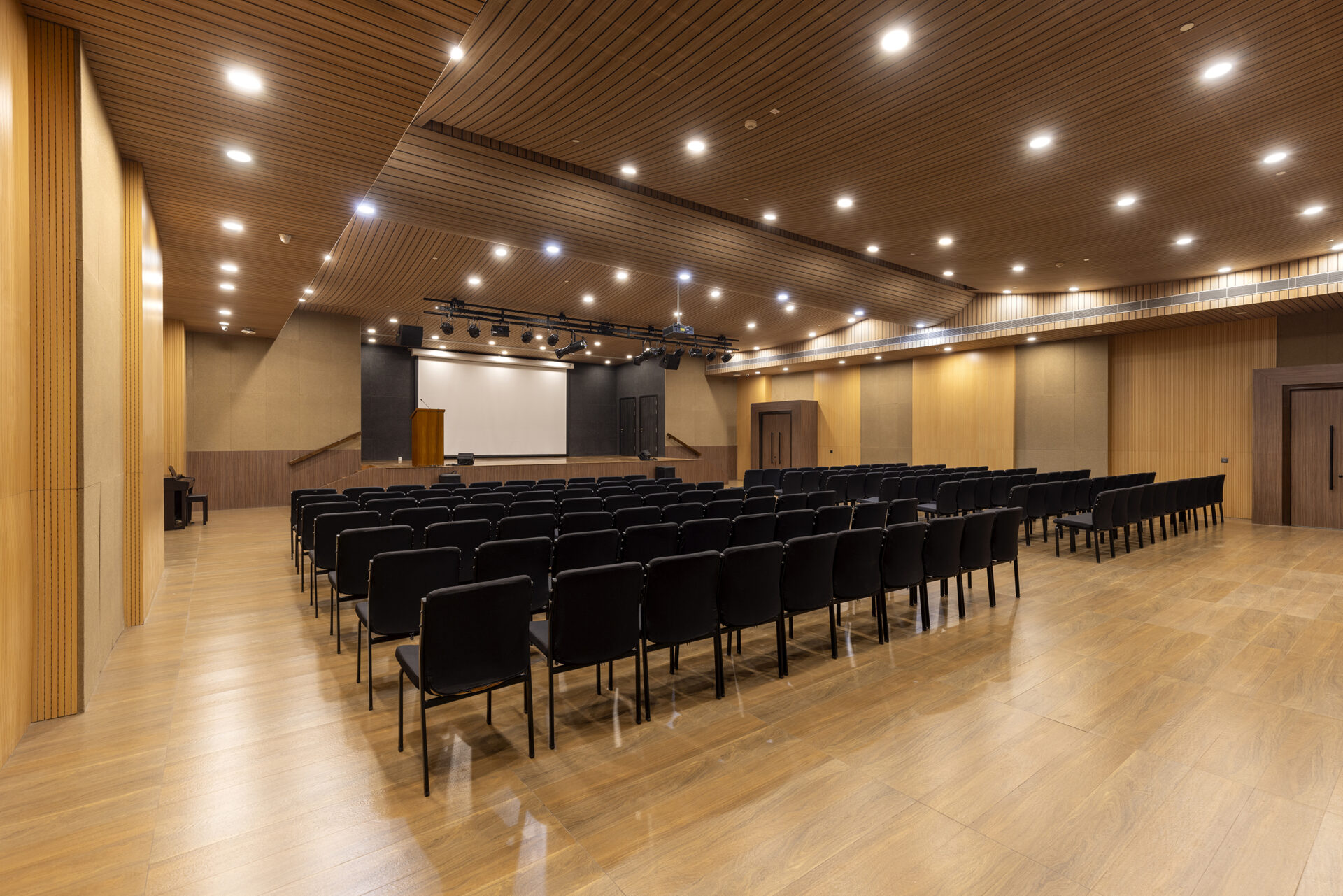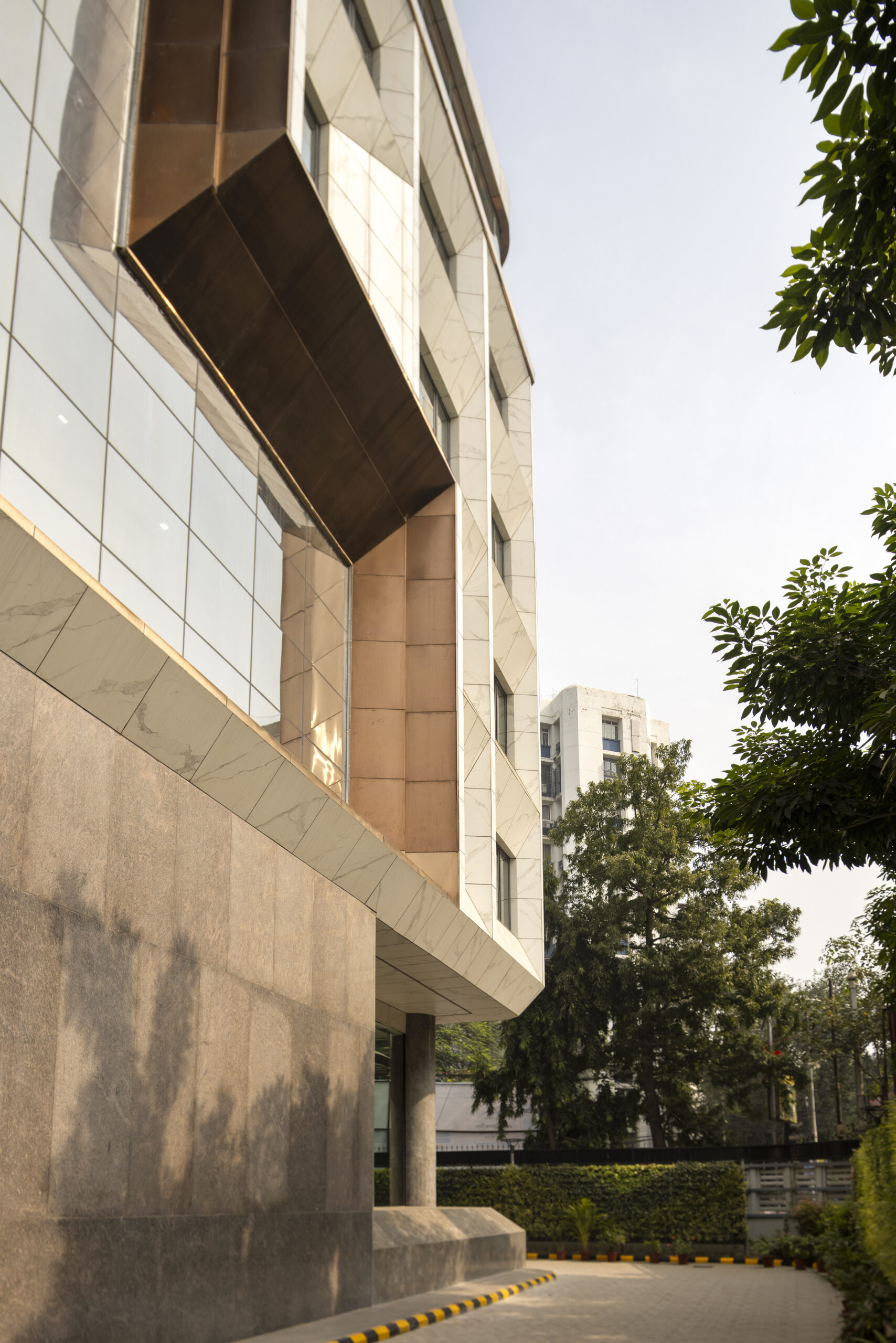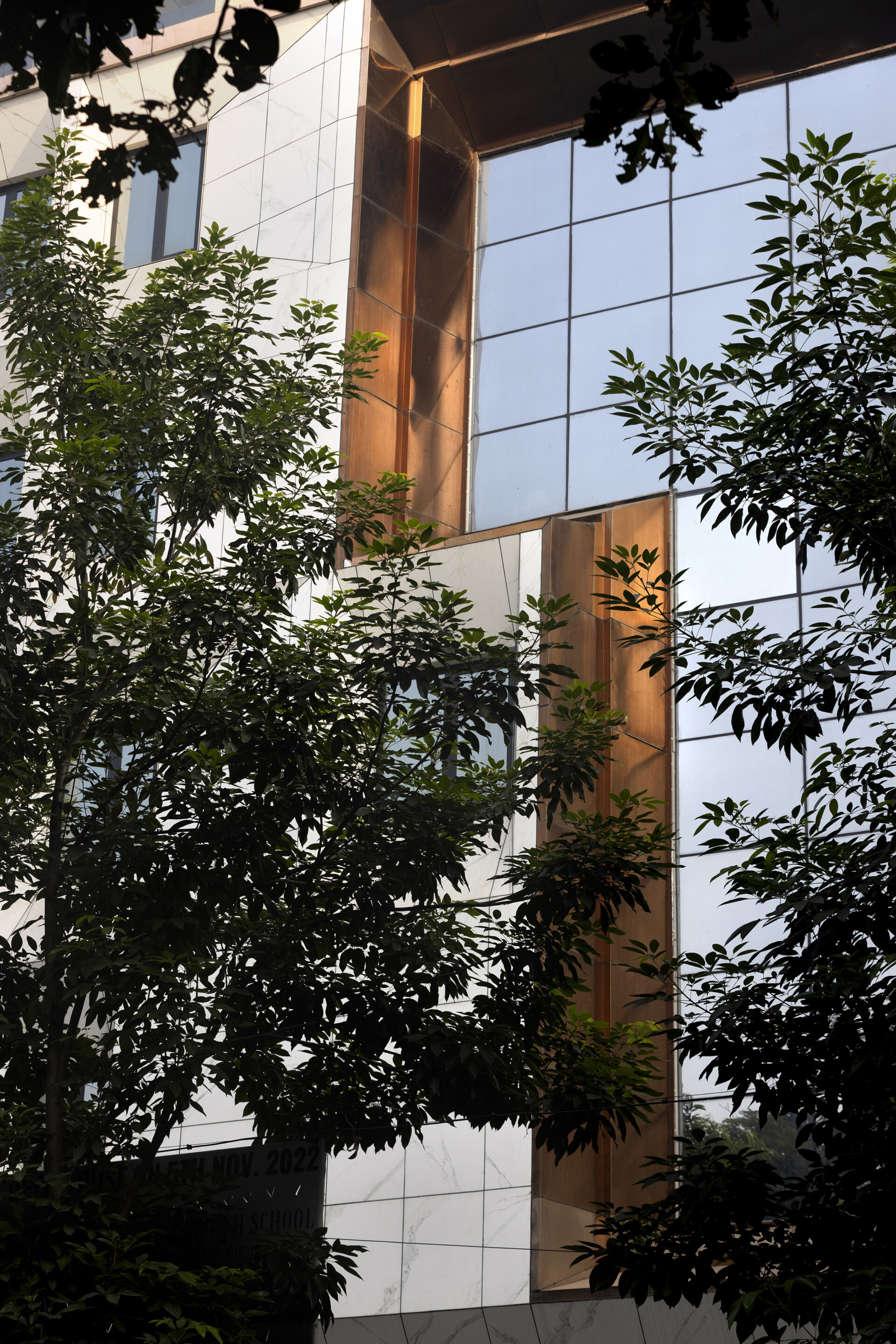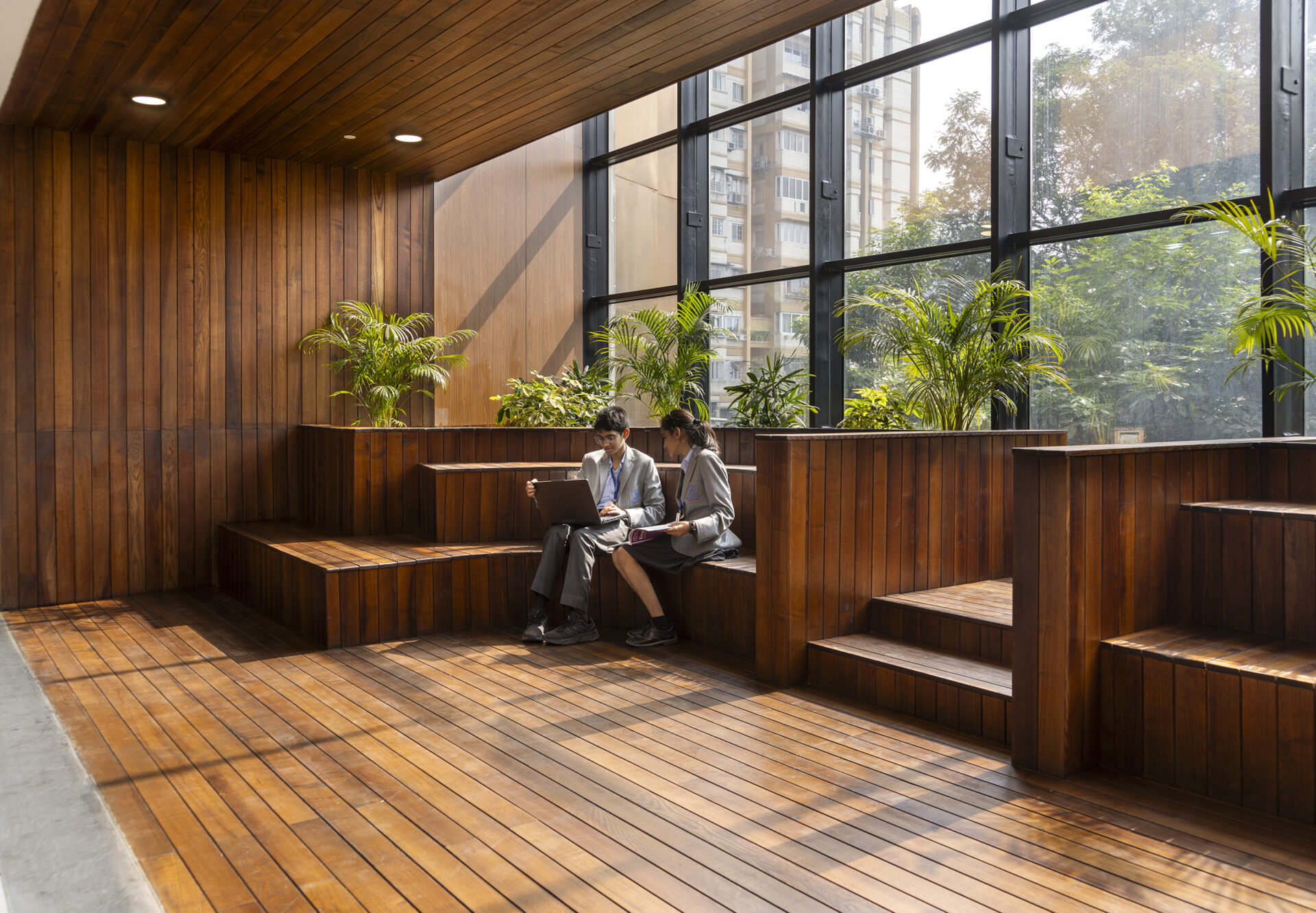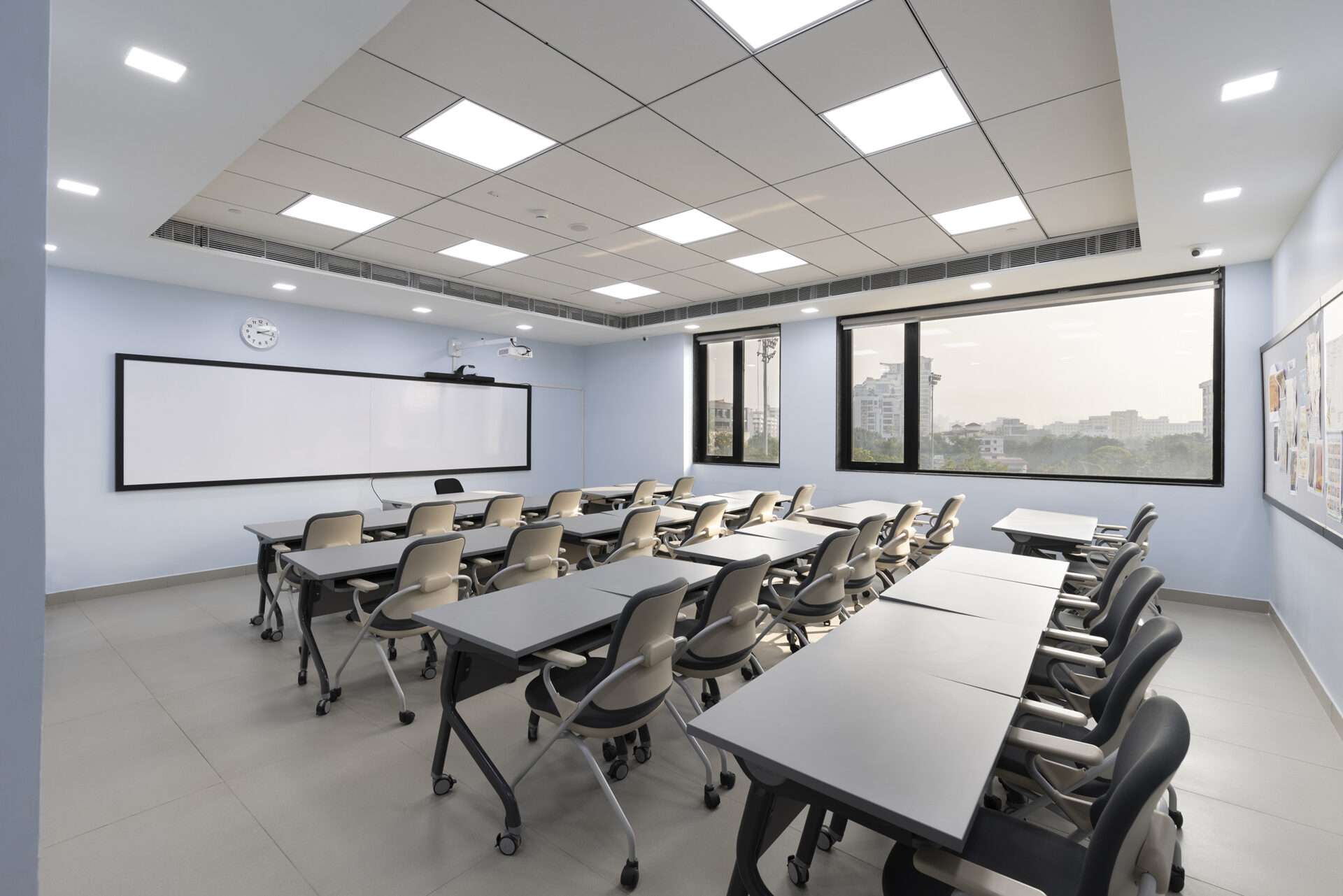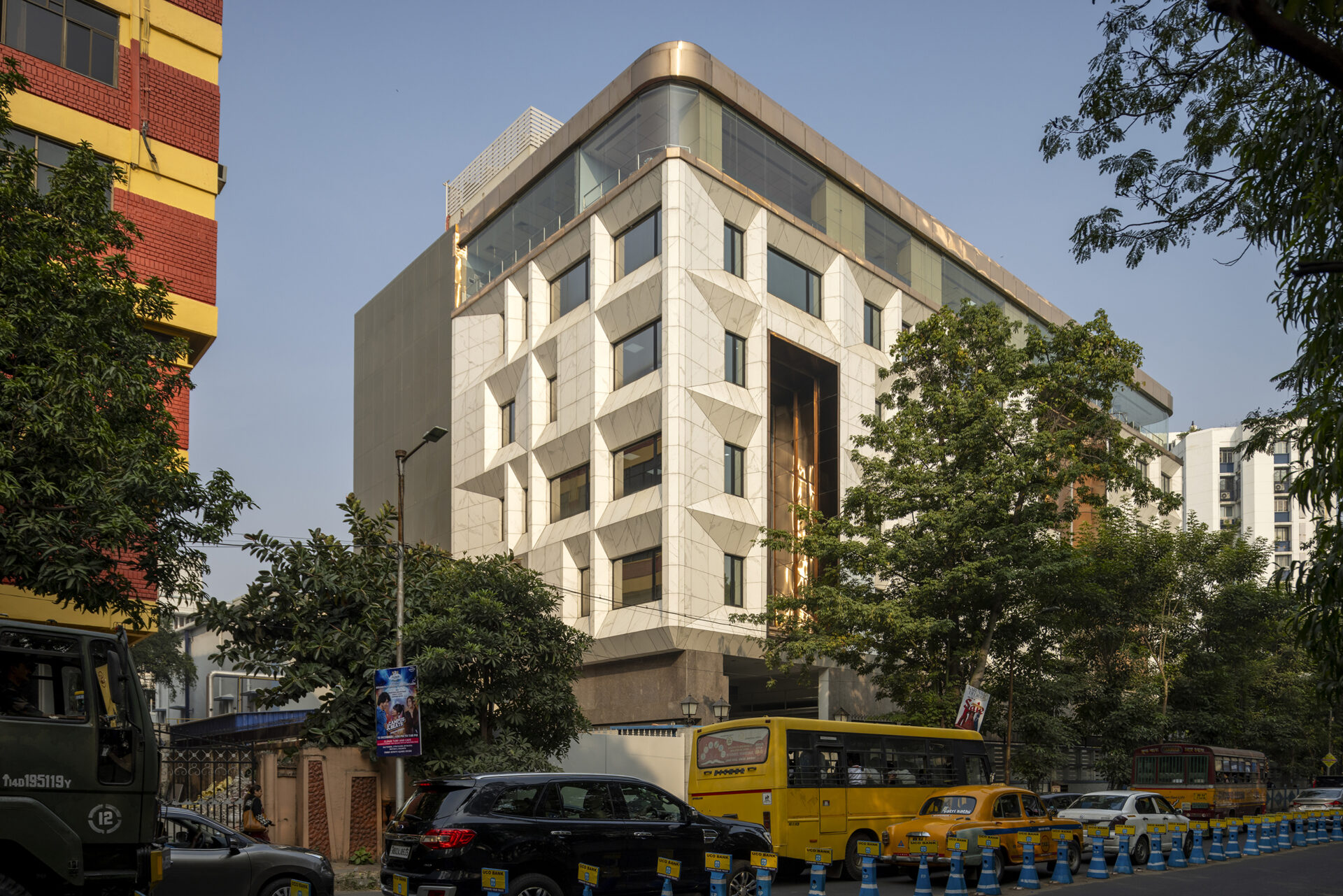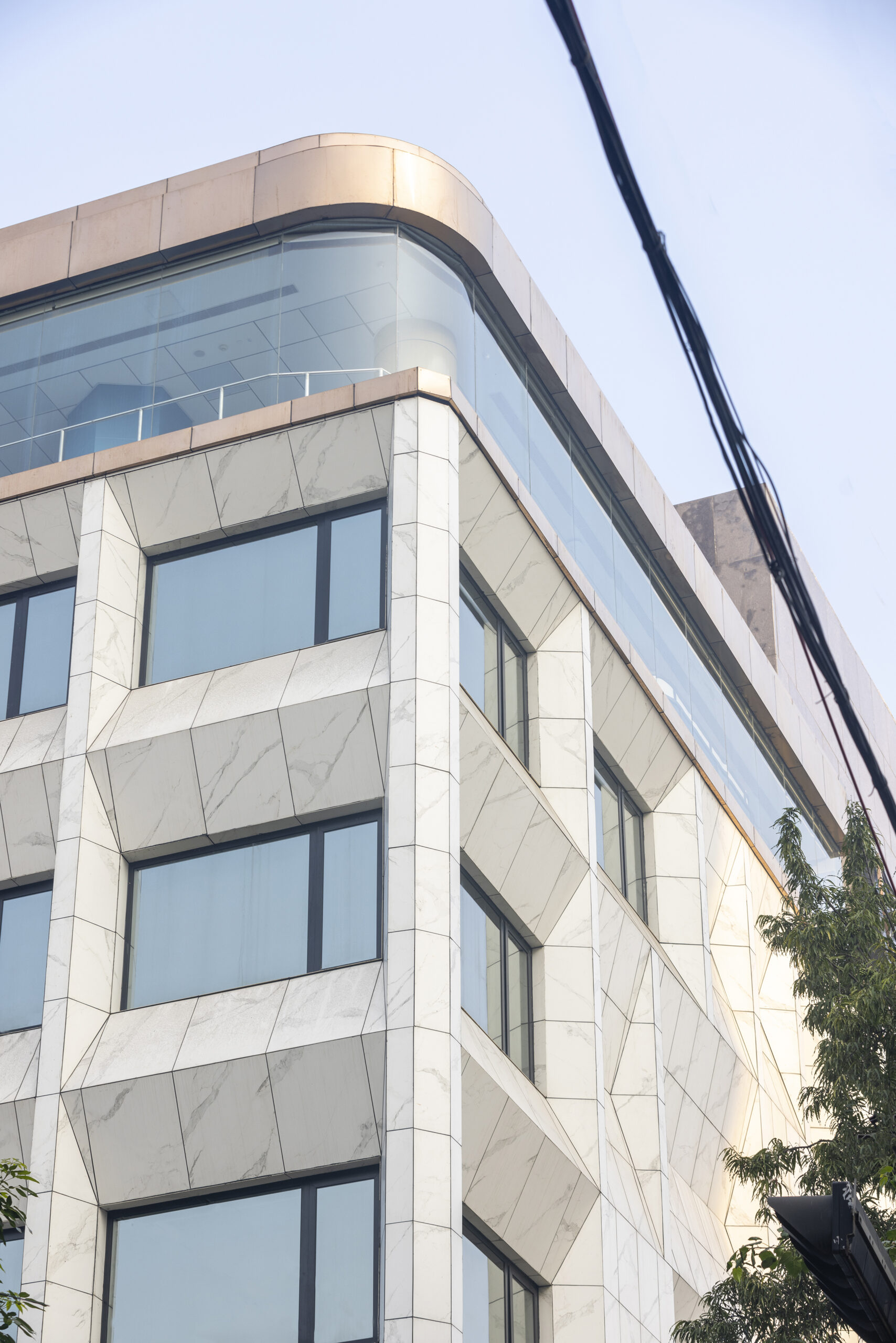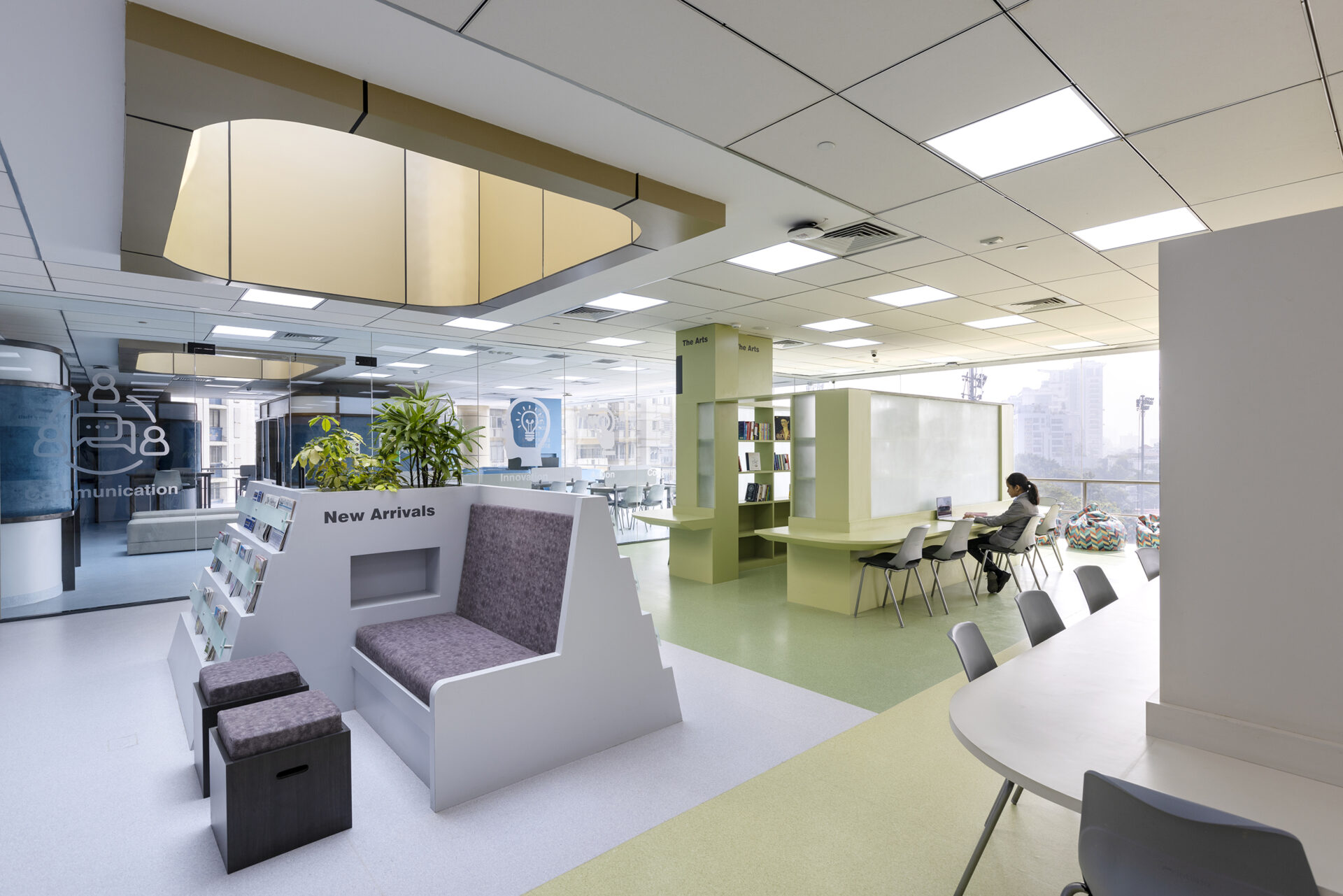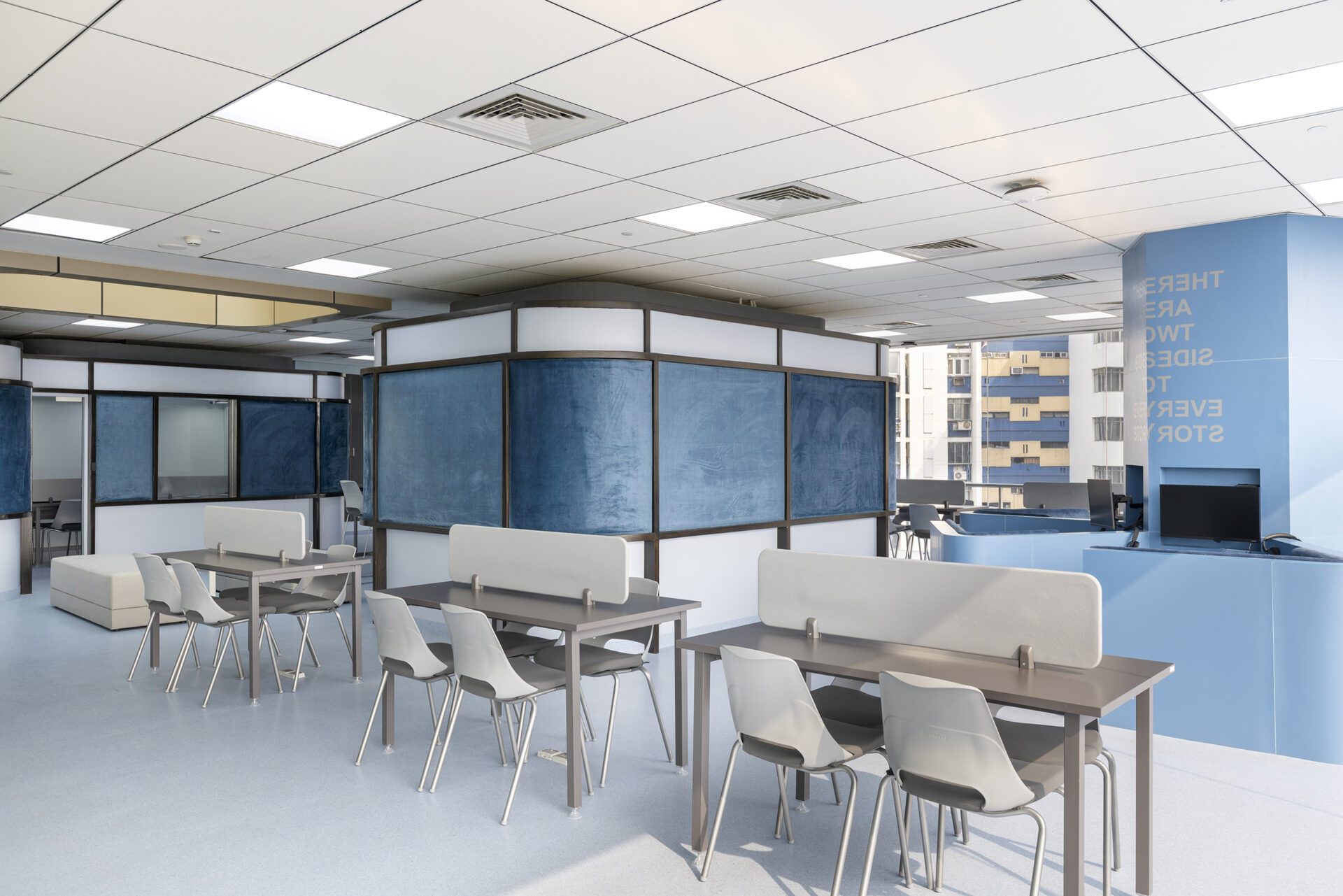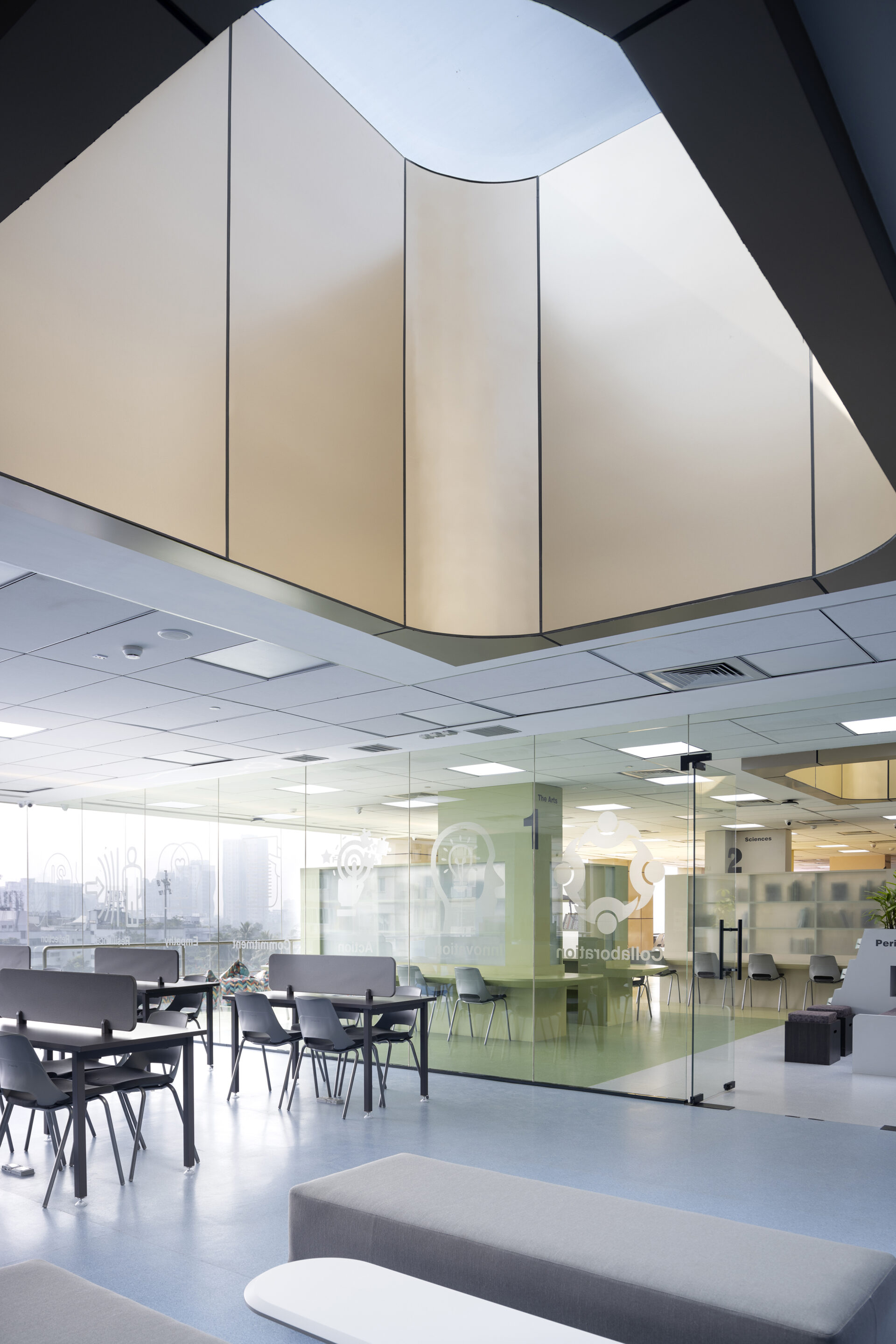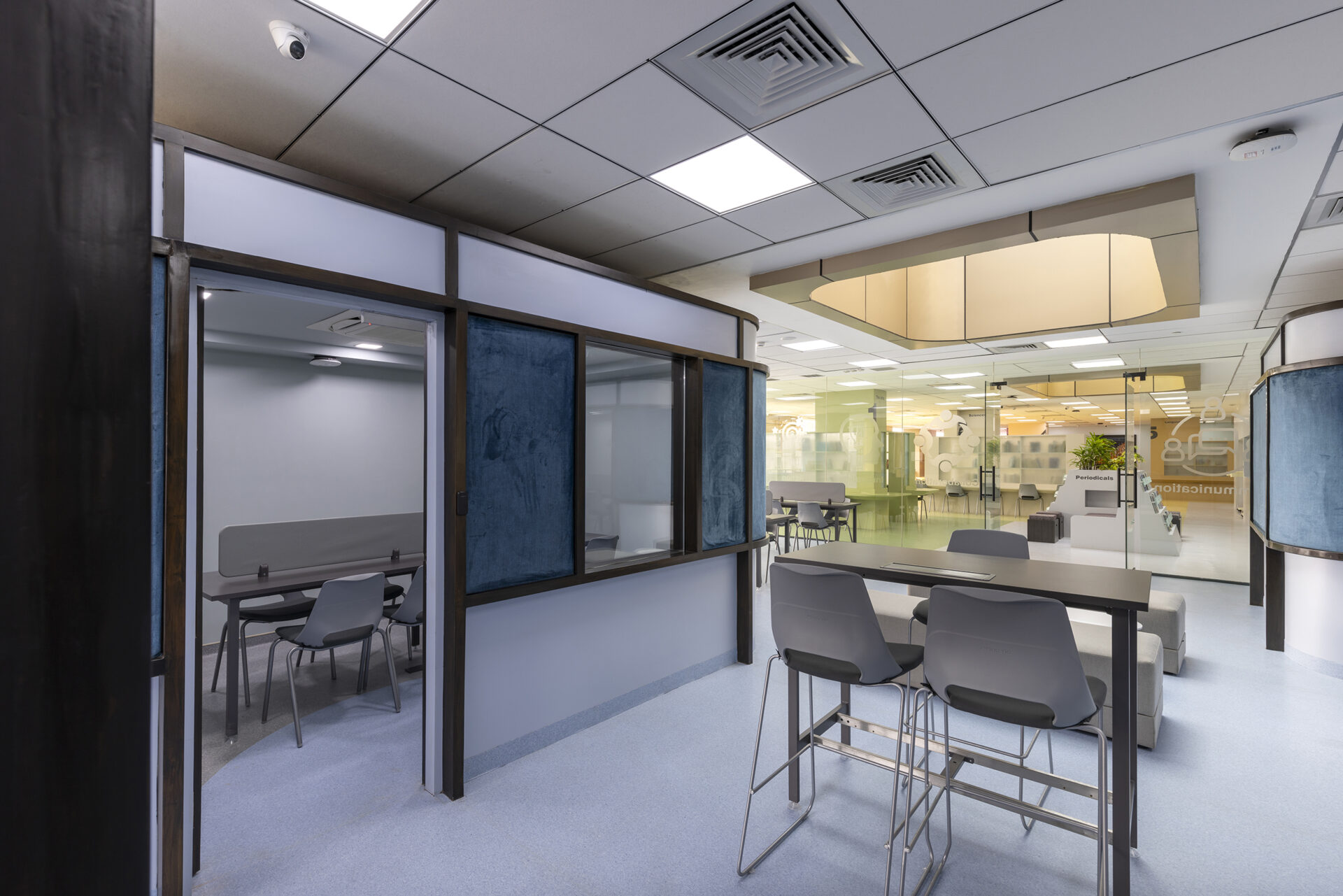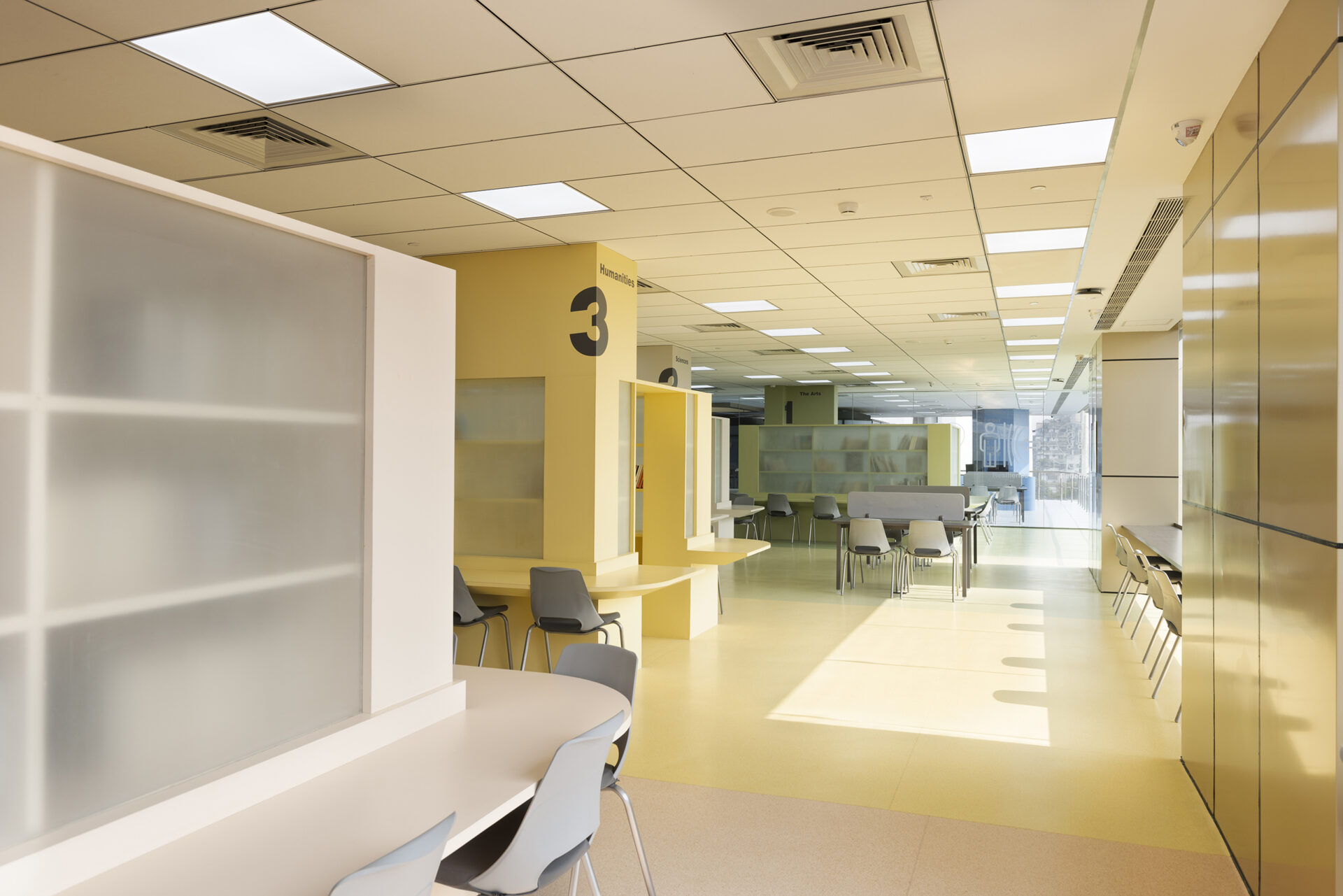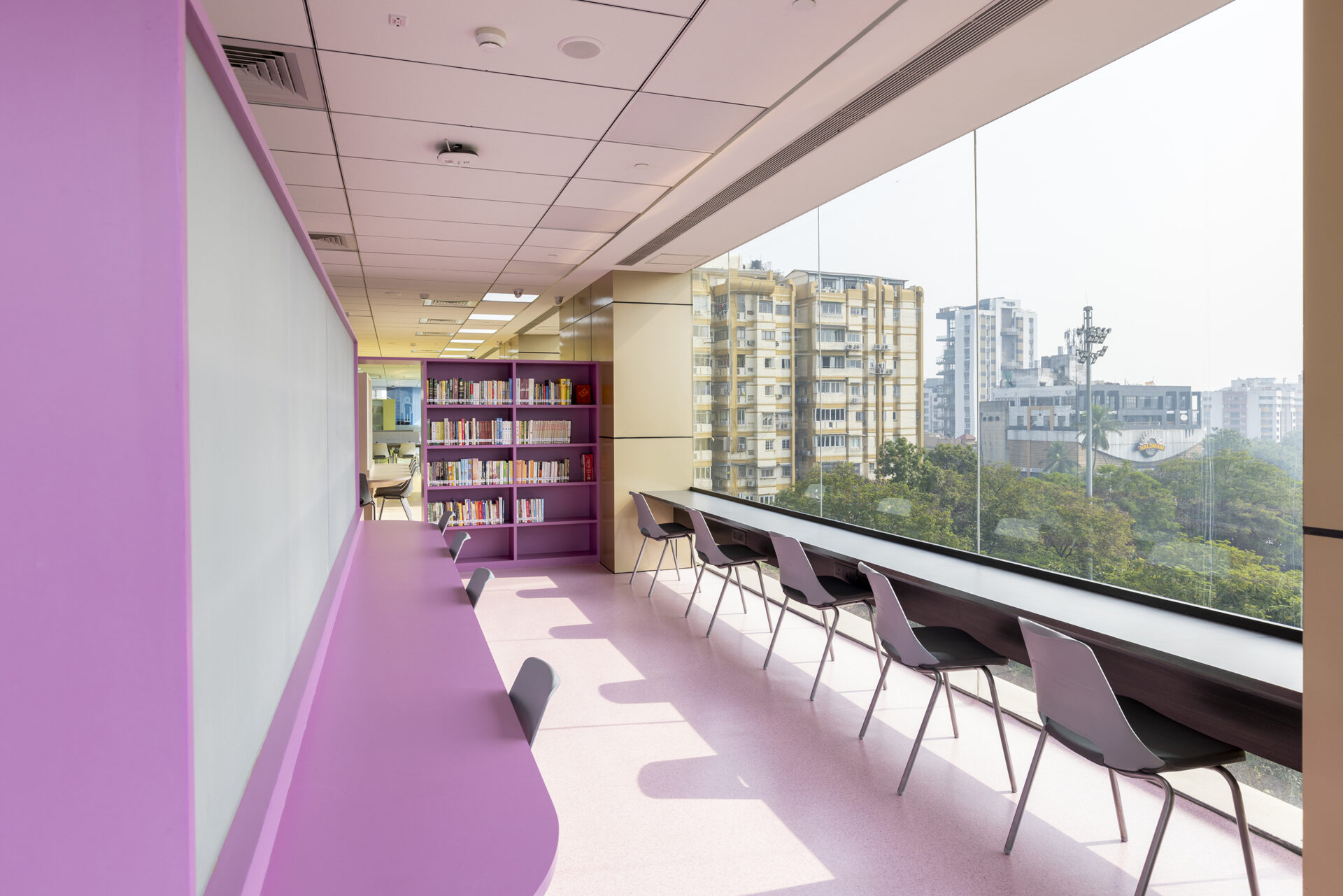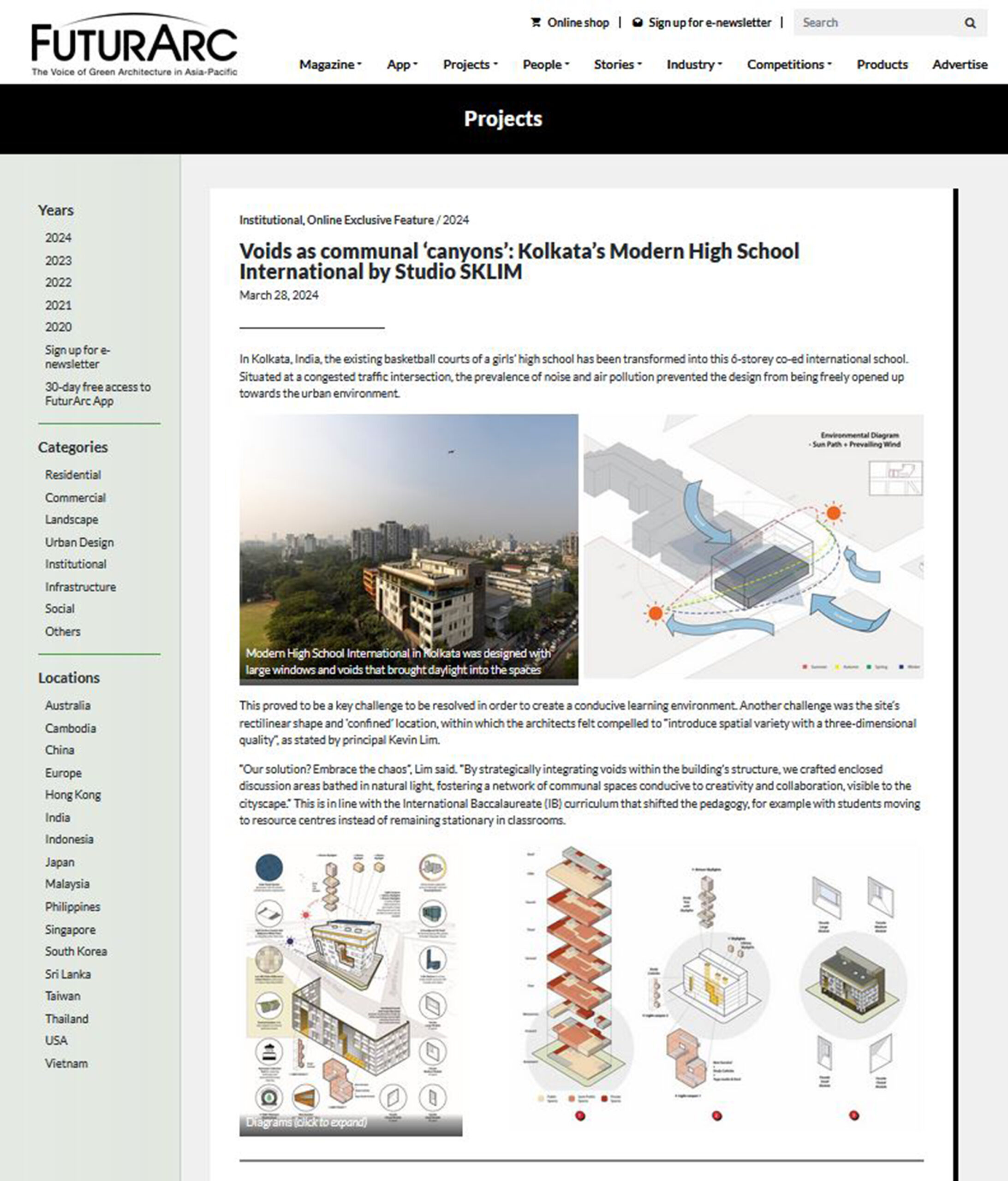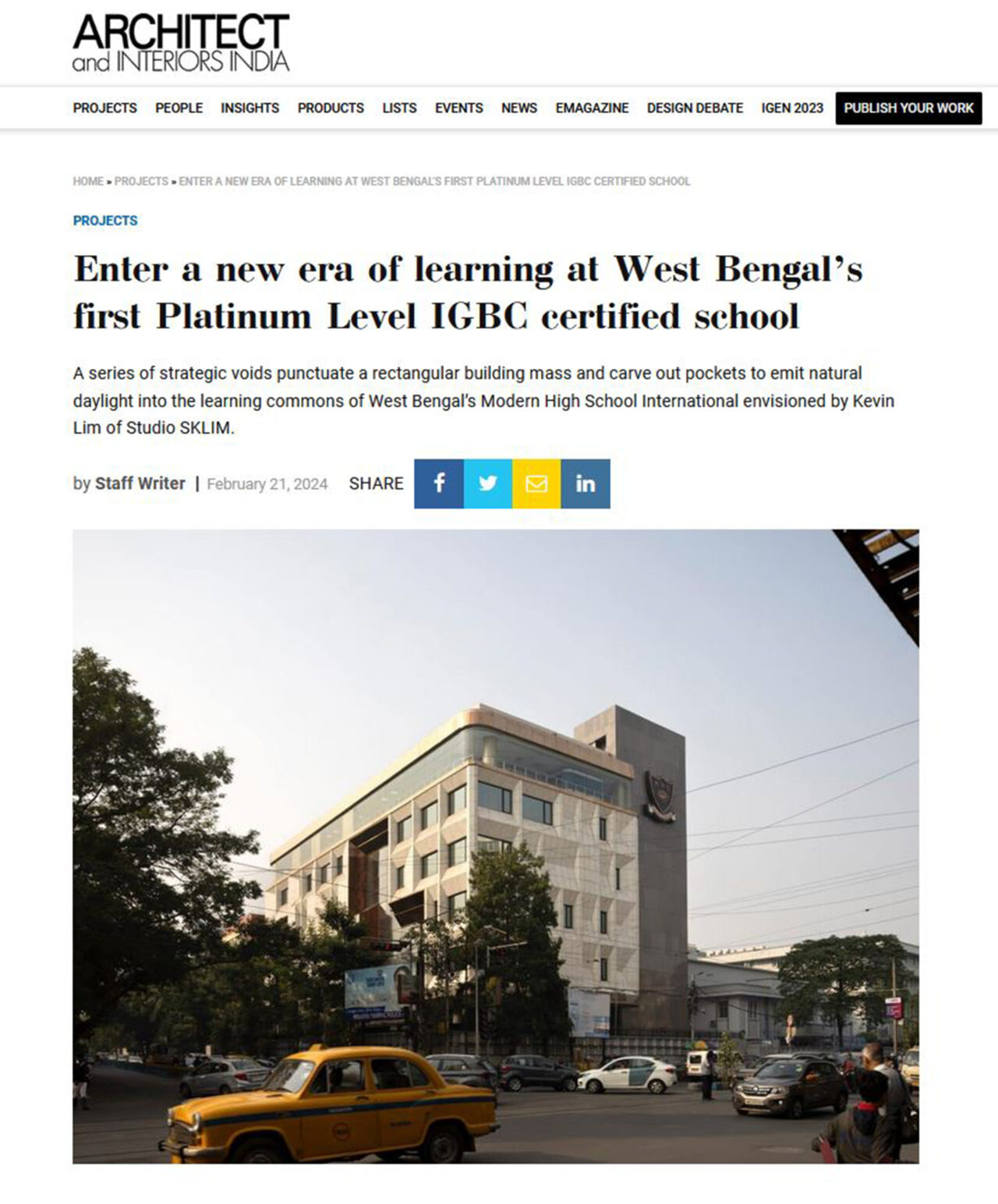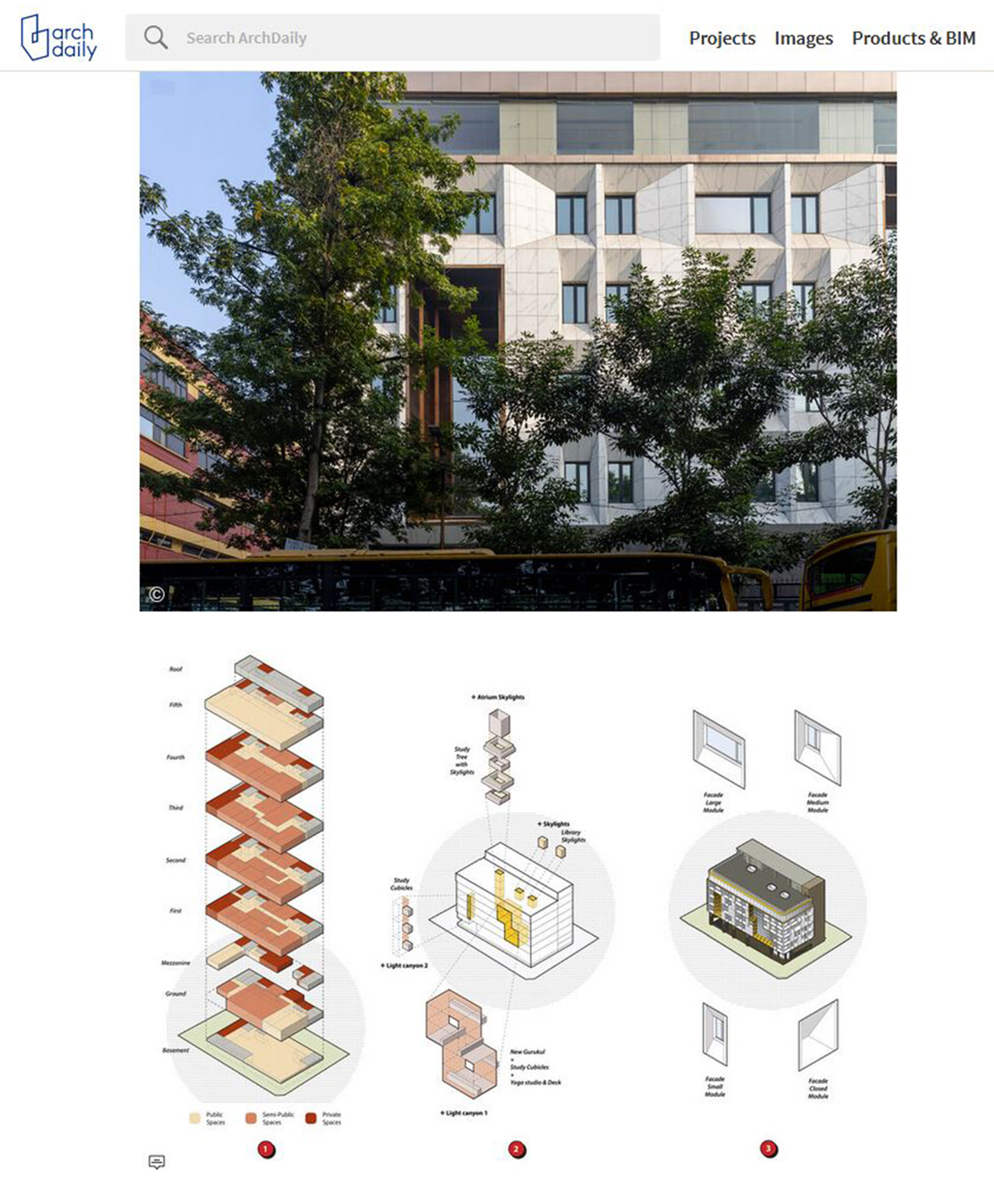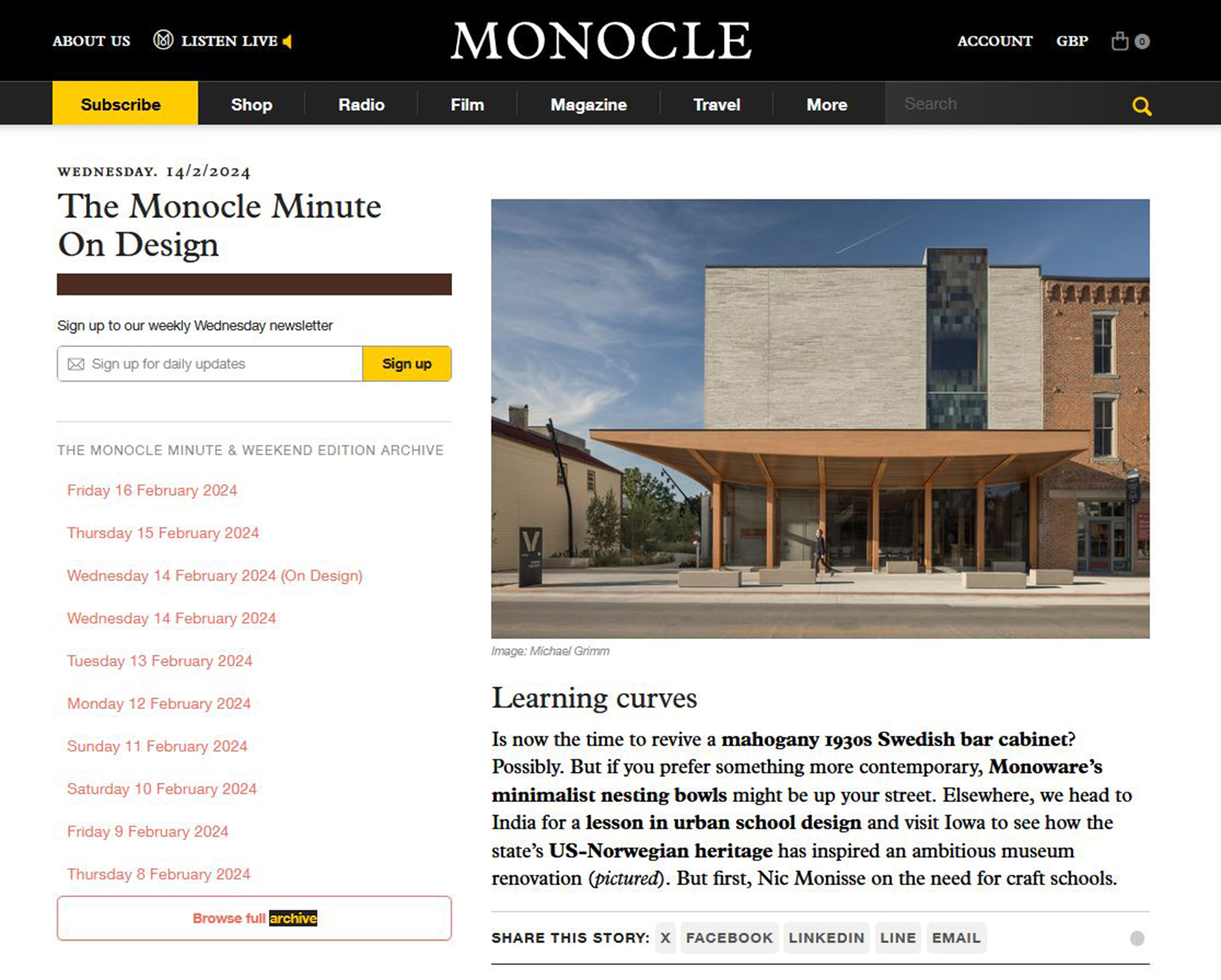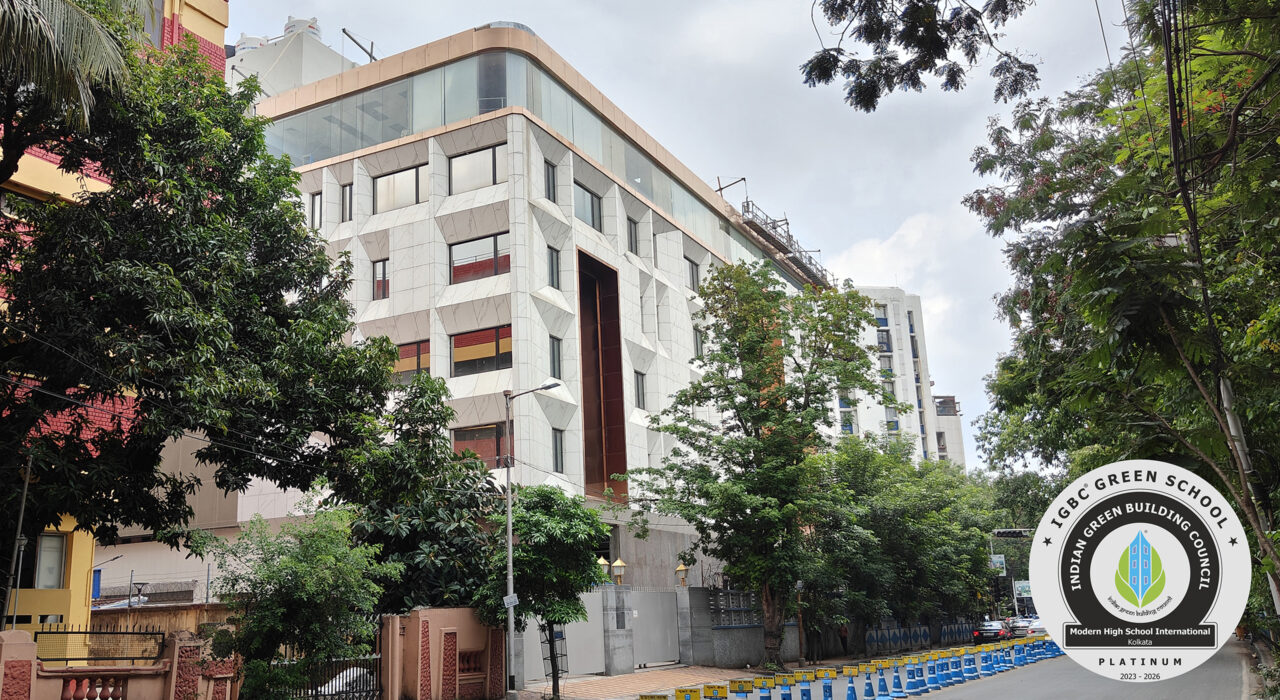Modern High School International
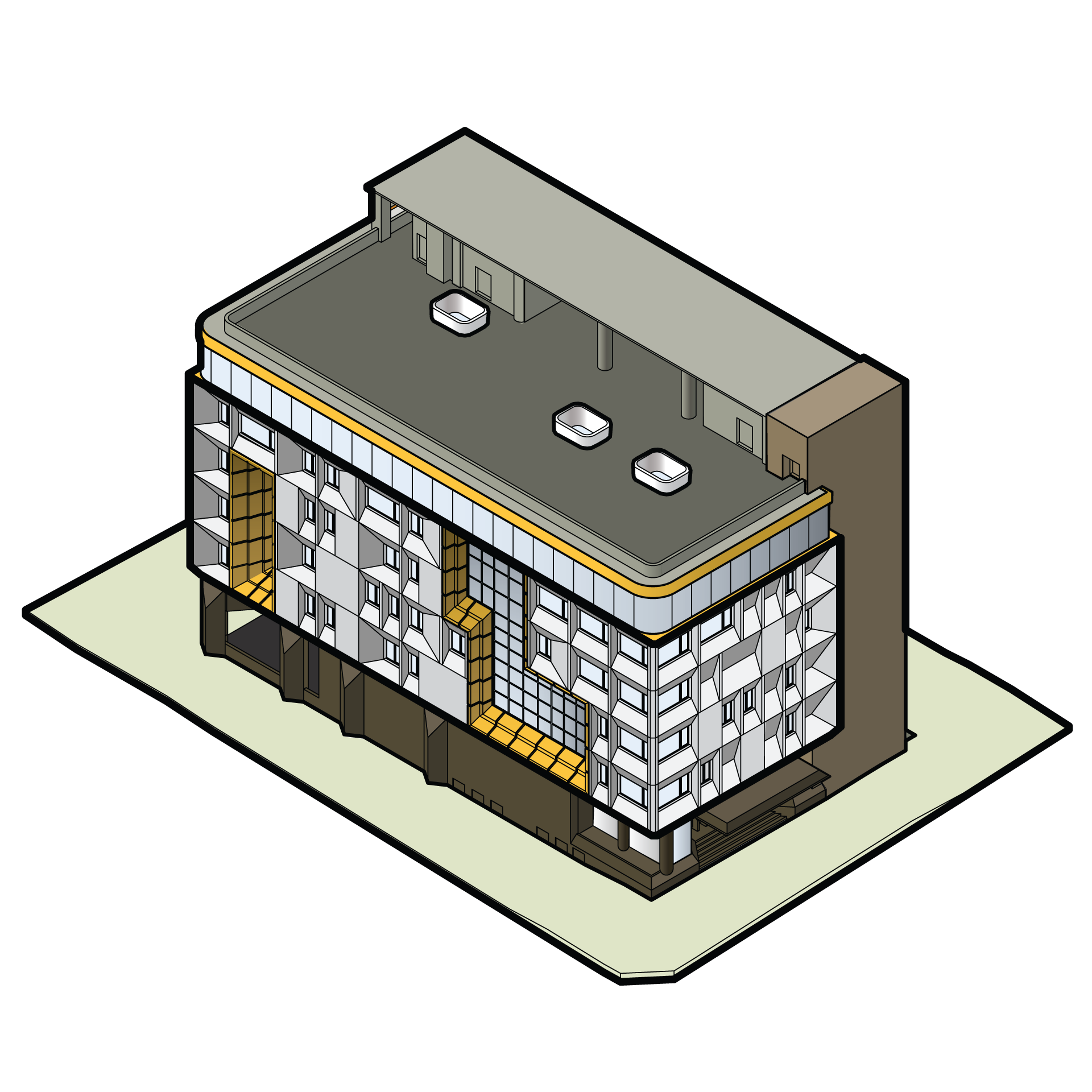
| client | Modern High School International (CK Birla Group) |
| program | Architecture Design (Education) Interior Design Landscape Design (Hard) Graphics and Wayfinding (Consultant) |
| area | 8000 m² |
| status | Completed |
| director in charge | Kevin Lim |
| project architects | Ashwin Bafna Josh Pattarapol Punpeng |
| team | Svasti Agrawal Suruchi Agrawal Aaron Lee Zakhran Khan Desmond Lee (Sustainability consultant – concept) |
| architect of record | Kothari & Associates (Kolkata) Bimal Mistry (Partner in charge) |
| project director | Devanshu Daga |
| project manager | Chetan Agarwal G.S Agarwal |
| on-site engineer | Suraj Sinha |
| construction admin | Indra Bansal Sanjay Nandi |
| structure engineer | S.P.A. Consultants |
| IT infrastructure | Rajesh Selvaganapathy |
| electrical engineer | Balaji Electrical |
| sanitary/plumbing & fire consultants | Aqua Utility Designs Management |
| geotechnical consultant | Geotests Engineers |
| green building consultant | Godrej & Boyce |
| building contractor | MFAR Constructions |
| facade contractor | AS Group |
| photography | Hitesh Toolsidass / Studio SKLIM |
| year of completion | 2023 |
A series of strategic voids punctuate a rectangular building mass and carve out pockets to emit natural daylight into the learning commons of an urban school.
Context
In Kolkata, India, the existing basketball courts of ‘Modern High School for Girls’ have been transformed into a 6-storey co-ed international school. Situated at a noisy and congested traffic intersection, the building’s massing begins as a rectangular block with north/south long elevations and east/west short elevations. The choice of a north-south longitudinal orientation with east-west as the short frontage aims to maximize natural daylight in south-facing classrooms year-round and provides an elevated panoramic view of a recreational lawn and the broader cityscape of Kolkata. This alignment also exposes a large facade surface to the prevailing wind, unobstructed by nearby infrastructure.
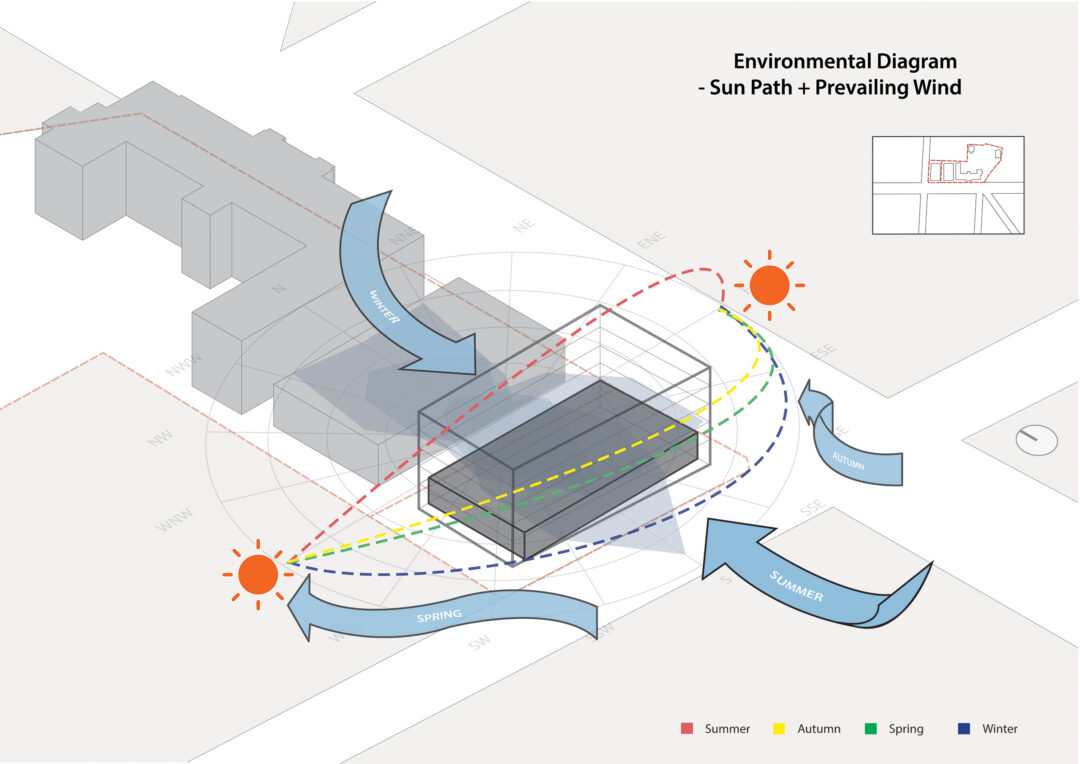
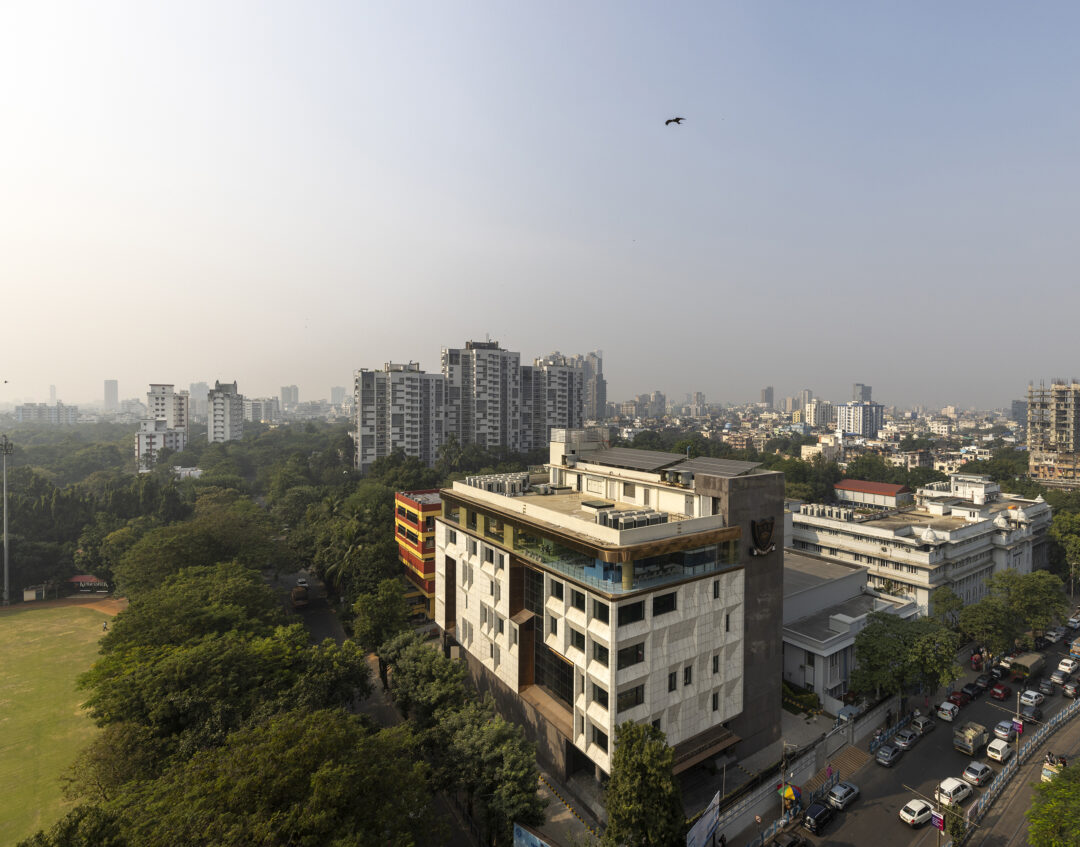
Programmatic Organisation
The International Baccalaureate curriculum (IB) brings about a shift in teaching pedagogies, leading to a reorganisation of spatial layouts. Students now move to resource centres instead of remaining stationary in classrooms. The new programmatic mix focuses on establishing dynamic relationships between student spaces and administration/teaching staff. For instance, the staff room is distributed across multiple levels to enhance student-teacher accessibility.
Each unique floor plate features a distinct programmatic distribution, encouraging student movement and creating a vibrant atmosphere throughout the building. Formal academic programs are seamlessly integrated with informal spaces such as a maker’s workshop, exhibition space, yoga/exercise room, multi-purpose studio, study nooks, and communal discussion areas to foster both conditioned and cognitive learning.
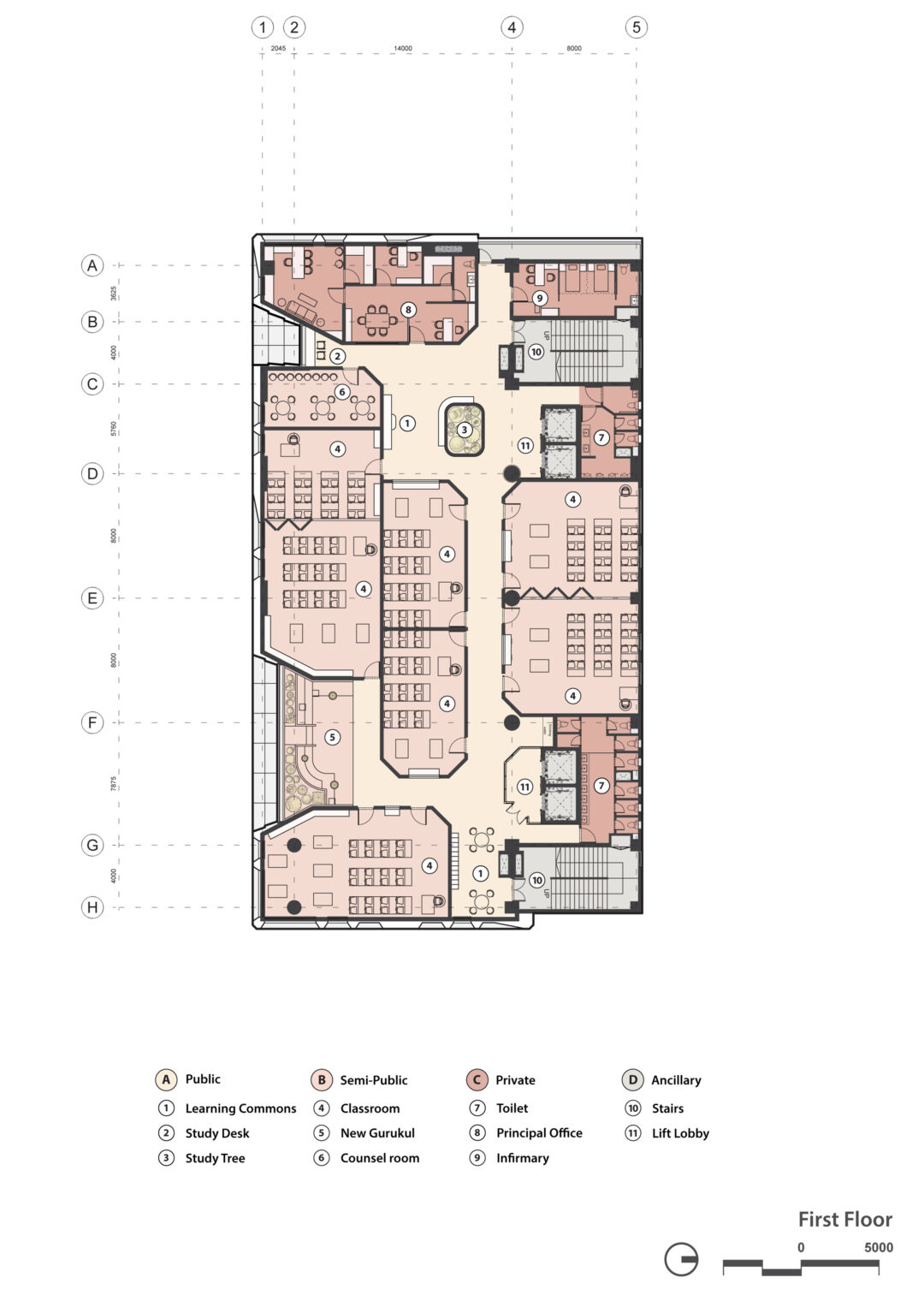
Moreover, the learning commons are strategically expanded to create intimate pockets of spaces by merging corridors and rearranging the placement of surrounding classrooms, resulting in winding circulation paths with various nooks. At the building’s apex, an entire floor plate is dedicated to a state-of-the-art library with quiet and general discussion zones. The quiet zone includes discussion pods for individuals and groups, providing access to multimedia resources and facilitating meetings.
A continuous glazed ribbon of fenestration across three sides offers students a contextual view of the city while reading or studying in natural daylight. Adjacent to the library is an event space designated for functions like student exhibitions or workshops by esteemed guests and alumni. The library is envisioned as both an active facilitator and a receptacle for knowledge transfer, serving both students and the broader community.
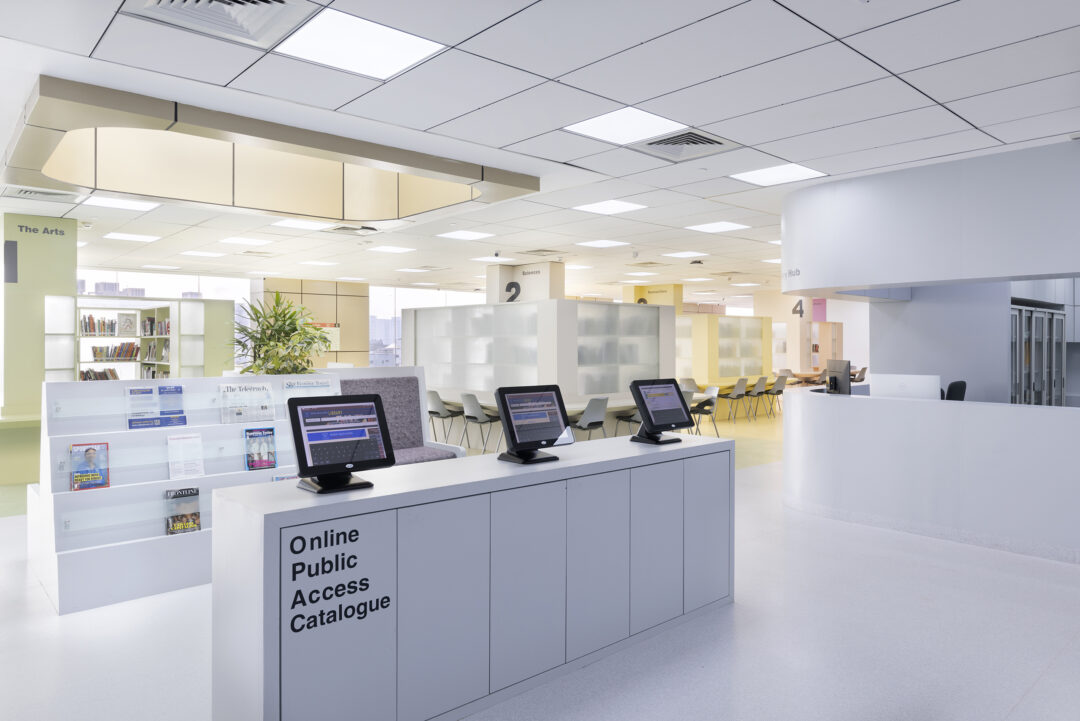
Lighting the Learning Commons
Two ‘Light Canyons’ are carved into the building mass, with an additional ‘Light Canyon’ inserting itself down the middle, forming a naturally lit atrium. These canyons create staggered communal spaces and offer the public glimpses of the school’s activities through these apertures.
The primary ‘Light Canyon’ features staggered discussion areas emerging from a biophilic classroom, inspired by the rustic setting of traditional Indian ‘Gurukul‘ classes, at the base level. Cantilevered platforms visually unite across different levels, while cascading voids take inspiration from natural canyon formations.
The secondary ‘Light Canyon’ introduces a tapered slot of light from the south, leading to the ‘Light Atrium.’ This bathes the atrium, fittingly named the ‘Study Tree’ due to its patterned balustrades resembling branches, in natural light across five levels. The ‘Study Tree’ area provides both communal discussion niches and individual study desks.
Structural Play
To achieve programmatic flexibility and introduce structural innovation on the south façade, the vertical services and circulation stacks were relocated to the north side. Additionally, structural engineering included the implementation of 5 post-tensioned beams capable of spanning up to 14 meters from the southern part of the building. This design choice resulted in a column-free environment for the multi-purpose hall, a majority of classrooms, and the learning commons.
The structural configuration not only allowed increased exposure to natural daylight from the south but also utilised cantilevered platforms to selectively filter direct sunlight into the common areas of the building. The strategically carved-out spaces, validated by solar radiance simulation studies, contribute to thermally comfortable enclosures, creating a conducive environment for students to gather throughout the day.
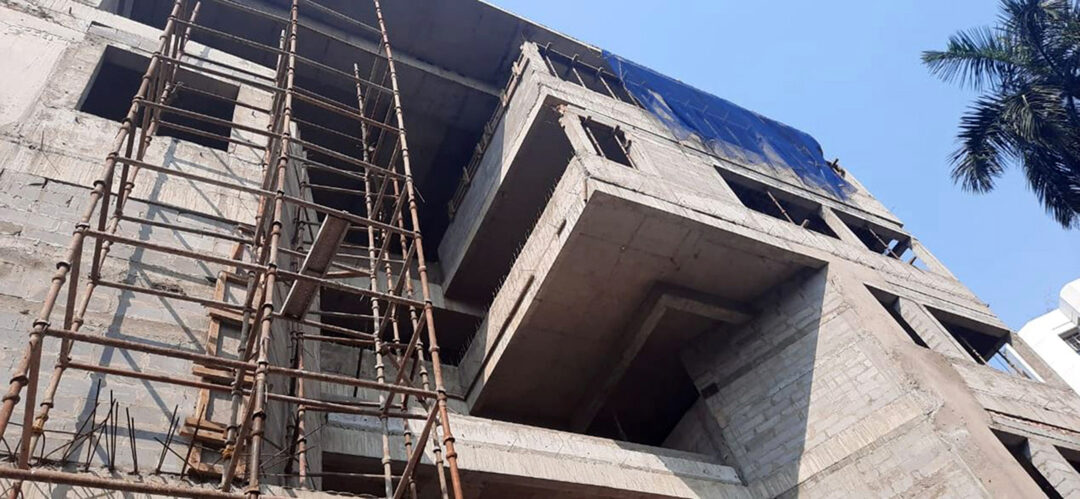
Given the persistent urban challenges of traffic noise and air pollution, the decision to glaze these ‘light canyons’ was imperative. The primary goal was to establish an acoustically suitable environment with clean air, all while maintaining a visual connection to the city context through expansive fenestrations.
Façade Articulation
The primary façade envelops the building on three sides using inclined ceramic panels. The vertical air gap within the ventilated light-coloured façade serves to insulate the building from direct solar radiation, prevent condensation built up, and reflect the majority of the incoming sunlight. The façade, segmented into 29 large modular types, is designed to optimise natural daylight penetration into the classrooms. Additionally, these inclined surfaces, coupled with recessed double-glazed windows, are strategically articulated to mitigate direct glare. The inclined form of these modules also addresses the client’s practical request to minimise ledges for birds to perch, considered a nuisance in the city’s context with their incessant bird droppings and chatter.
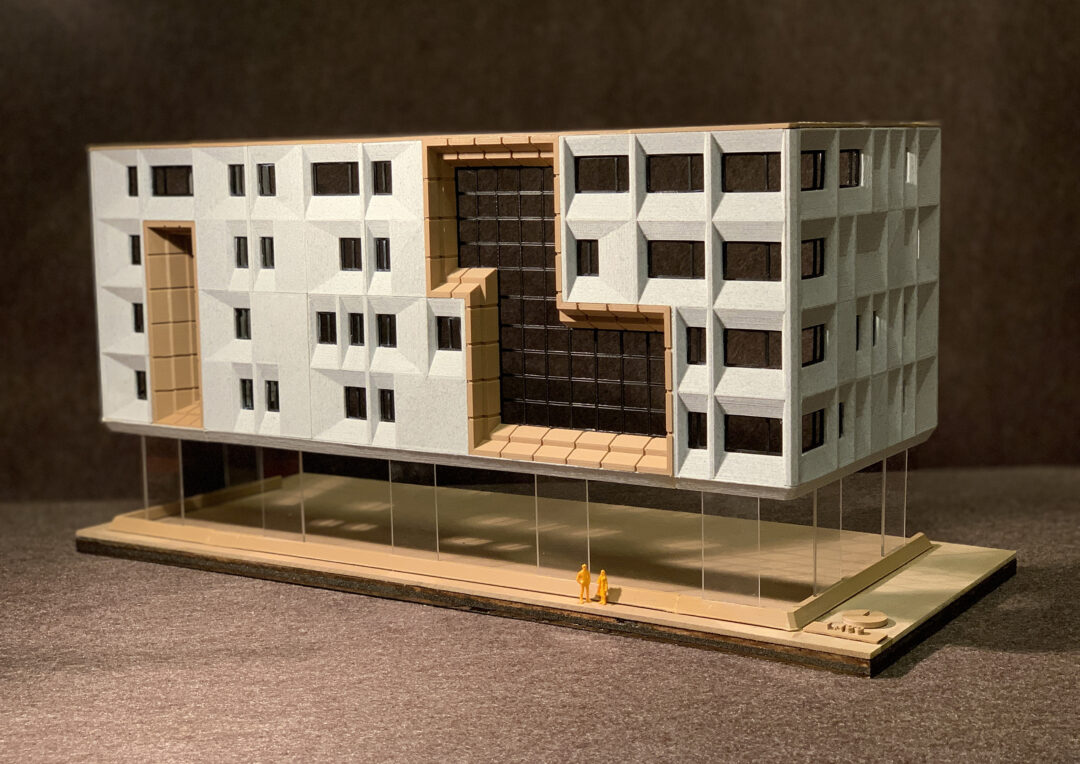
Sustainability and Ecological Strategies
The school’s commitment to sustainability and adherence to green building practices were integral from the initial design phase. The Indian Green Building Council’s (IGBC) comprehensive sustainable strategies were diligently incorporated, leading the school to achieve the prestigious Platinum Mark (1st in West Bengal state). Implemented strategies encompass sustainable water practices, promotion of healthy indoor air quality, utilisation of eco-friendly school materials (pavers with low solar radiance index (SRI) to reduce heat island effect), installing clean energy equipment (solar panels), rainwater harvesting collection tanks and integration of green education into the curriculum (hands-on workshops on sustainable innovations). The entire building is envisioned as a showcase, allowing students to actively educate themselves in real time about green building strategies and practices. The new Modern High School International aspires to be a ‘beacon of knowledge’ by providing an environment shaped by both natural light and modern educational pedagogies.
